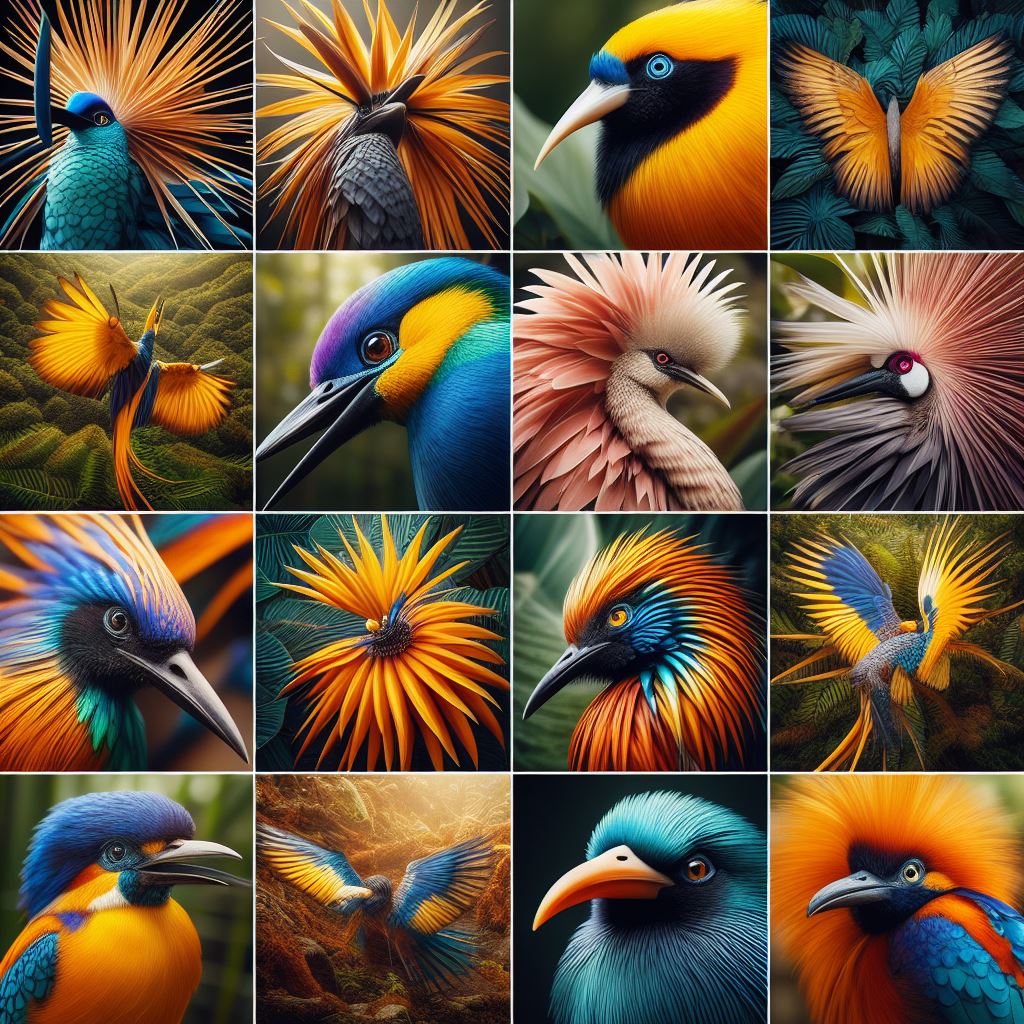The birds-of-paradise belong to the family Paradisaeidae within the order Passeriformes. They are primarily found in eastern Indonesia, Papua New Guinea, and eastern Australia. This family comprises 45 species distributed across 17 genera. Birds-of-paradise are renowned for the striking plumage of the males, with the majority of species exhibiting sexual dimorphism. Male birds-of-paradise often possess long and elaborate feathers extending from various parts of their bodies, including the beak, wings, tail, or head. These extravagant plumages play a crucial role in courtship displays and mate attraction.
Most birds-of-paradise species inhabit dense rainforest habitats, where they find ample food and shelter. Their diet primarily consists of fruits, supplemented with arthropods to a lesser extent. These birds exhibit a diverse range of breeding systems, including monogamy and lek-type mating systems. In some species, males gather in specific display areas known as leks to compete for the attention of females through elaborate displays and vocalizations.
Overall, birds-of-paradise are emblematic of the rich biodiversity and unique evolutionary adaptations found in tropical rainforests. Their extravagant plumage, intricate courtship behaviors, and specialized ecological roles make them fascinating subjects for scientific study and a source of wonder for birdwatchers and nature enthusiasts worldwide.
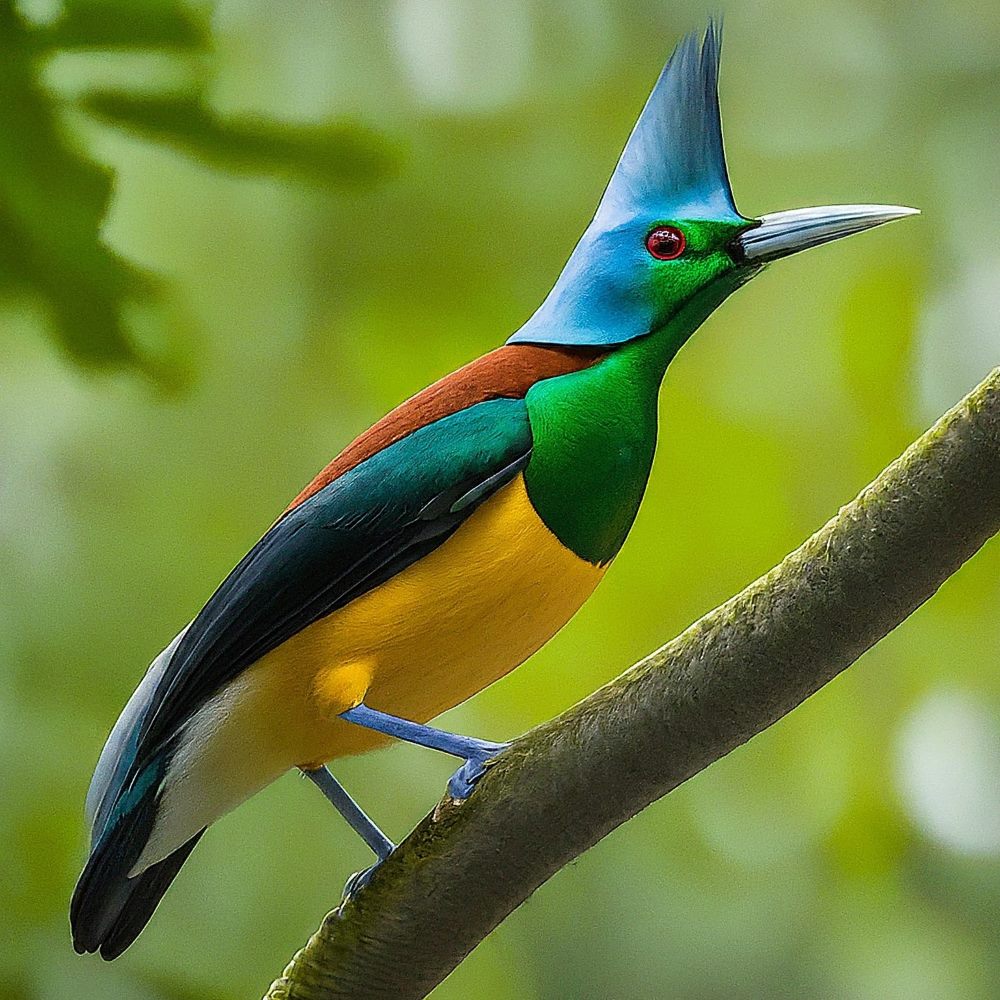
Post Contents
- 1. King Bird-of-Paradise:
- 2. Raggiana Bird-of-Paradise:
- 3. Trumpet Manucode:
- 4. Crinkle-Collared Manucode:
- 5. Lawes’s Parotia:
- 6. Carola’s Parotia:
- 7. King of Saxony Bird-of-Paradise:
- 8. Twelve-Wired Bird-of-Paradise:
- 9. Pale-Billed Sicklebill:
- 10. Wallace’s Standardwing:
- 11. Greater Lophorina:
- 12. Victoria’s Riflebird:
- 13. Magnificent Riflebird:
- 14. Brown Sicklebill:
- 15. Short-Tailed Paradigalla:
- 16. Ribbon-Tailed Astrapia:
- 17. Blue Bird-of-Paradise:
- 18. Wilson’s Bird-of-Paradise:
- 19. Red Bird-of-Paradise:
- 20. Greater Bird-of-Paradise:
- 21. Black Sicklebill:
- 22. Lesser Bird-of-Paradise:
- 23. Paradise Riflebird:
- 24. Lesser Melampitta:
- 25. Standardwing Bird-of-Paradise:
- 26. Halmahera Paradise-Crow:
- 27. Black-Billed Sicklebill:
- 28. Growling Riflebird:
- 29. Duivenbode’s Six-Wired Bird-of-Paradise:
- 30. Greater Melampitta:
- 31. Sharpe’s Lobe-Billed Parotia:
- 32. Wilhelmina’s Bird-of-Paradise:
- 33. False-Lobed Astrapia:
- 34. Stresemann’s Bird-of-Paradise:
- Conclusion:
- Related FAQ’s: Beautiful Birds-of-Paradise
1. King Bird-of-Paradise:
The King Bird-of-Paradise (Cicinnurus regius) is a small but spectacular bird adorned with iridescent plumage and striking colors. Found in the lowland rainforests of New Guinea, this species is renowned for its elaborate courtship display, which involves intricate dance moves and vocalizations to attract mates.
The male King Bird-of-Paradise displays a vibrant mix of orange, green, and blue feathers, along with a distinctive cape-like collar and elongated tail feathers. Its regal appearance and captivating courtship rituals make it a prized sight for birdwatchers and photographers alike.

2. Raggiana Bird-of-Paradise:
The Raggiana Bird-of-Paradise (Paradisaea raggiana) is one of the most iconic species in the Birds-of-Paradise family, known for its flamboyant plumage and elaborate courtship displays. Endemic to the forests of Papua New Guinea, particularly the southern highlands, the male Raggiana Bird-of-Paradise boasts a vibrant red and yellow coloration, with long, flowing tail feathers and ornate flank plumes.
During the breeding season, males gather in communal display grounds called leks, where they perform intricate dance routines and vocalizations to attract females. The Raggiana Bird-of-Paradise is a symbol of Papua New Guinea’s cultural heritage and biodiversity, revered for its beauty and cultural significance.
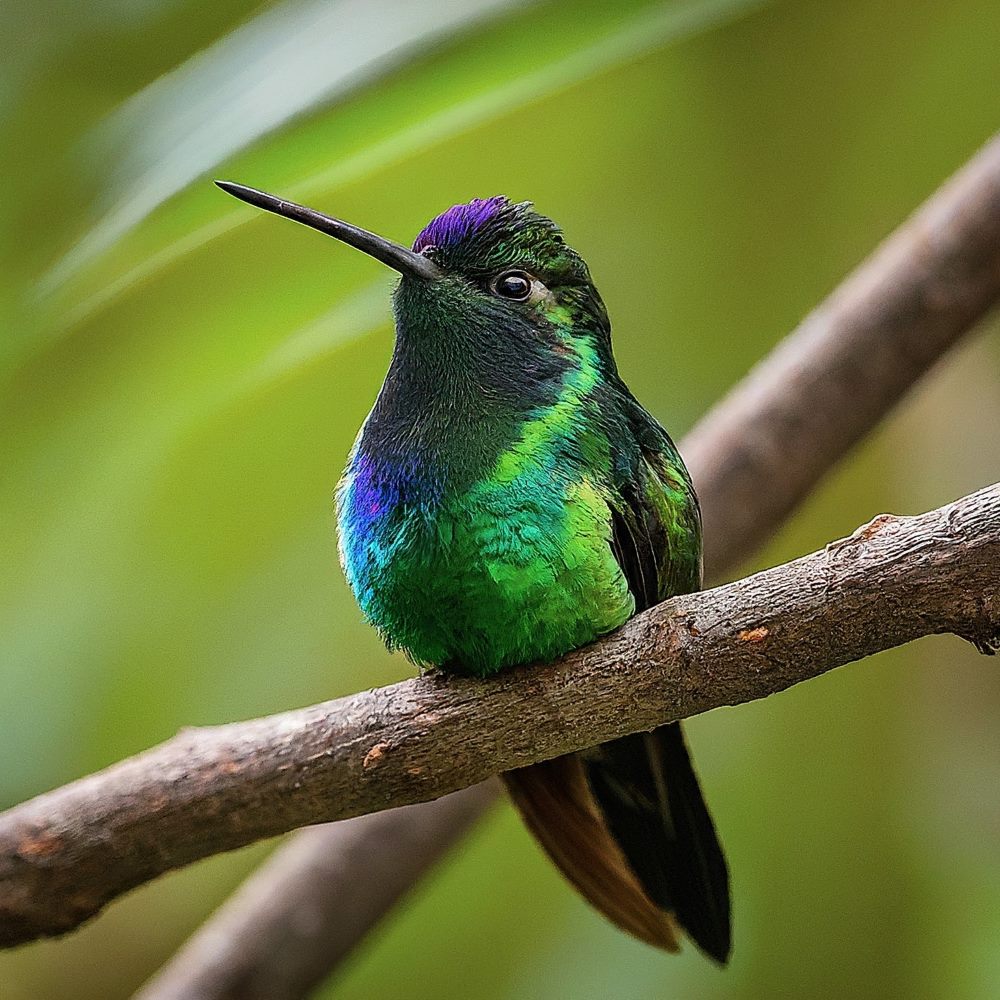
3. Trumpet Manucode:
The Trumpet Manucode (Manucodia keraudrenii) is a striking bird-of-paradise species characterized by its glossy black plumage and distinctive trumpet-like vocalizations. Endemic to the rainforests of New Guinea and nearby islands, the Trumpet Manucode is known for its secretive nature and elusive behavior, often hiding among dense foliage.
Despite its understated appearance, the male Trumpet Manucode possesses intricate iridescent patterns on its wings and tail, which shimmer in the sunlight. During courtship displays, males emit loud, trumpet-like calls to attract mates and establish territory, adding to the mystique of this enigmatic species.
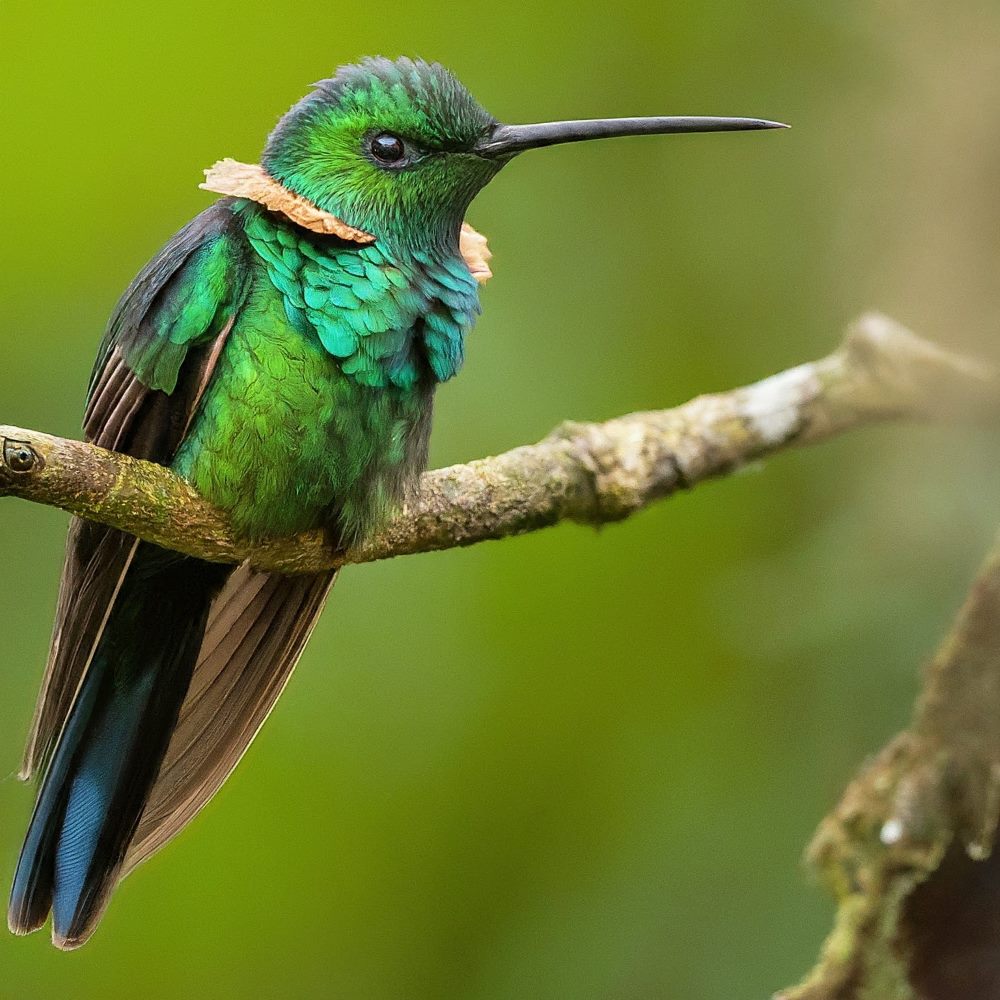
4. Crinkle-Collared Manucode:
The Crinkle-Collared Manucode (Manucodia chalybatus) is a unique bird-of-paradise species distinguished by its crinkled neck feathers and metallic blue-black plumage. Endemic to the rainforests of New Guinea and surrounding islands, this species is known for its elaborate courtship displays and vocalizations.
The male Crinkle-Collared Manucode performs intricate dance routines, spreading its iridescent wings and puffing out its crinkled collar feathers to impress females. Despite its cryptic appearance, the Crinkle-Collared Manucode plays a vital role in the ecosystem as a seed disperser and pollinator, contributing to the diversity and health of tropical rainforests.
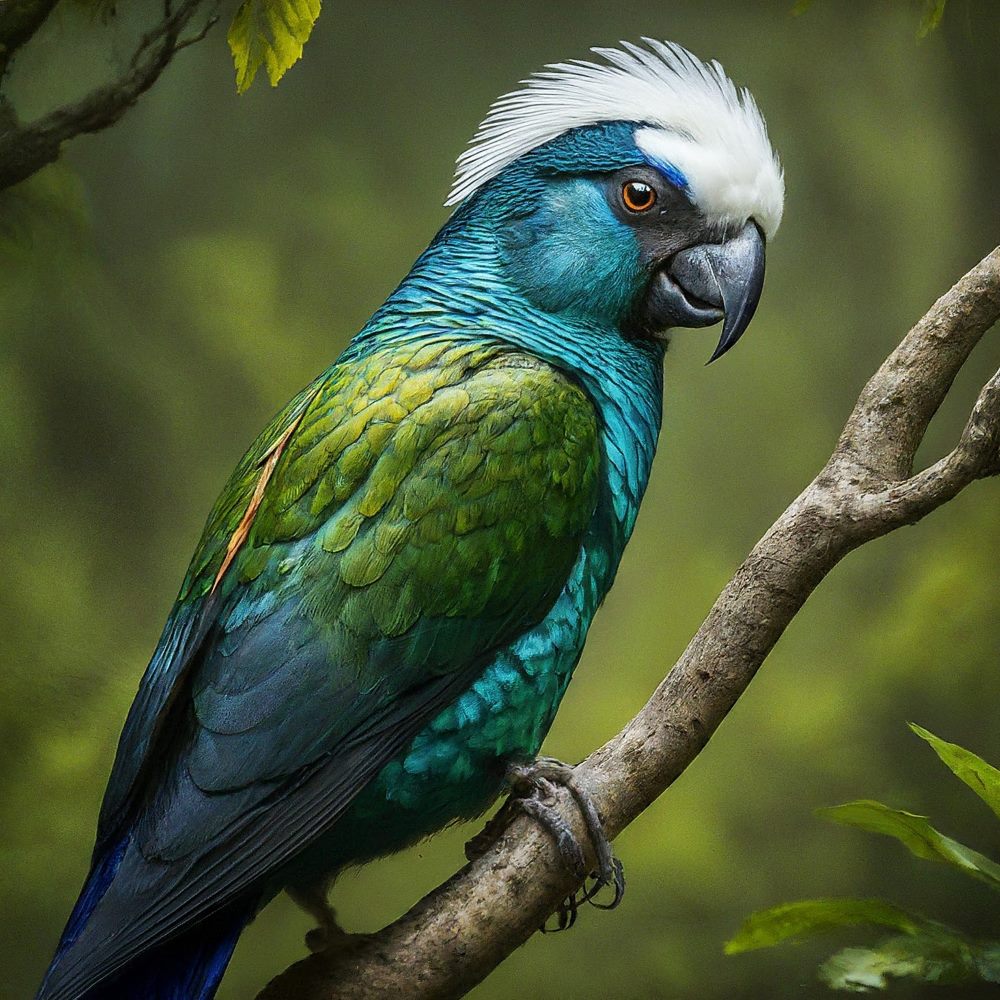
5. Lawes’s Parotia:
Lawes’s Parotia (Parotia lawesii) is a mesmerizing bird-of-paradise species endemic to the rainforests of New Guinea’s Huon Peninsula. Named after the British naturalist Albert Stewart Meek Lawes, who first discovered the species in the late 19th century, Lawes’s Parotia is renowned for its elaborate courtship displays and intricate plumage.
The male Lawes’s Parotia boasts a striking combination of iridescent blues, greens, and purples, along with ornate flank plumes and elongated tail feathers. During courtship rituals, males perform acrobatic displays, including backflips and pendulum swings, to woo potential mates. Lawes’s Parotia exemplifies the beauty and diversity of New Guinea’s avifauna, captivating birdwatchers with its stunning appearance and captivating behavior.
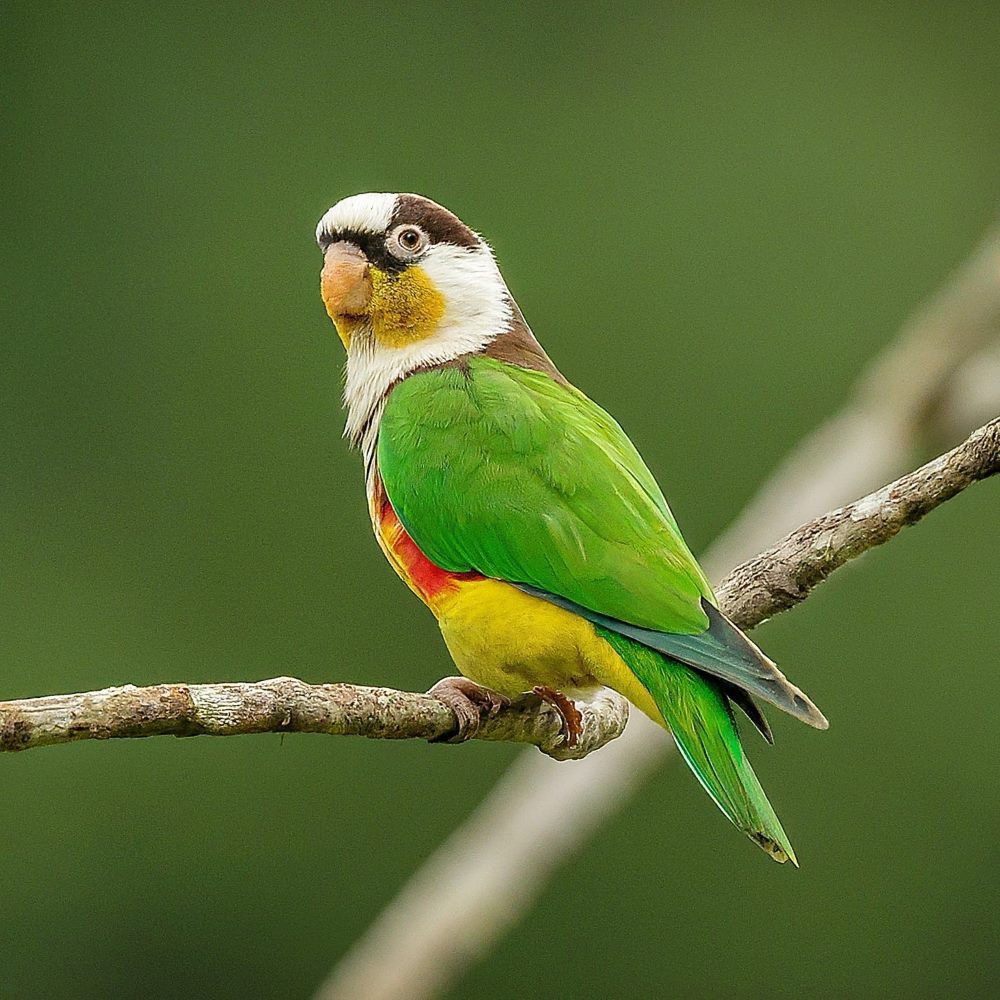
6. Carola’s Parotia:
Carola’s Parotia (Parotia carolae) is a rare and elusive bird-of-paradise species found in the mountainous regions of New Guinea’s Central Highlands. Named in honor of Carola von Kielmansegg, the wife of the German explorer Richard Archbold, who first documented the species in the 1930s, Carola’s Parotia is known for its intricate courtship displays and vibrant plumage.
The male Carola’s Parotia displays a striking combination of iridescent greens, blues, and purples, with ornate flank plumes and elongated tail feathers. During courtship rituals, males perform elaborate dance routines and vocalizations to attract females, showcasing their agility and prowess. Carola’s Parotia serves as a symbol of the rich biodiversity and cultural heritage of New Guinea, captivating birdwatchers with its beauty and mystique.
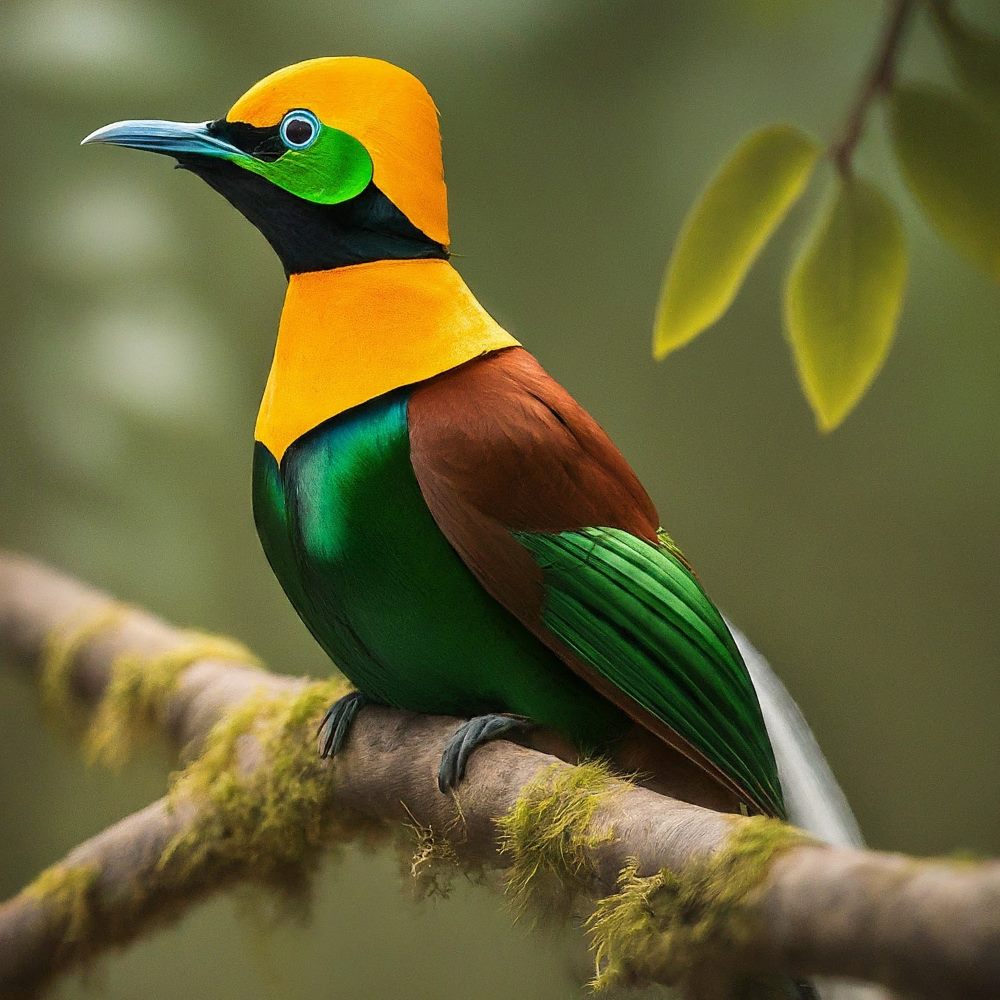
7. King of Saxony Bird-of-Paradise:
The King of Saxony Bird-of-Paradise (Pteridophora alberti) is a remarkable species endemic to the montane forests of New Guinea. Named after its distinctive crown-like head plumes, reminiscent of the regal attire worn by European monarchs, the King of Saxony Bird-of-Paradise is renowned for its extravagant courtship displays and unique vocalizations.
The male King of Saxony Bird-of-Paradise boasts a striking appearance, with long, filamentous plumes extending from its head and vibrant yellow-orange coloration. During courtship rituals, males perform elaborate dance routines, waving their head plumes and emitting loud, piercing calls to attract mates. The King of Saxony Bird-of-Paradise exemplifies the extraordinary diversity of New Guinea’s avifauna, captivating birdwatchers with its stunning appearance and mesmerizing behavior.
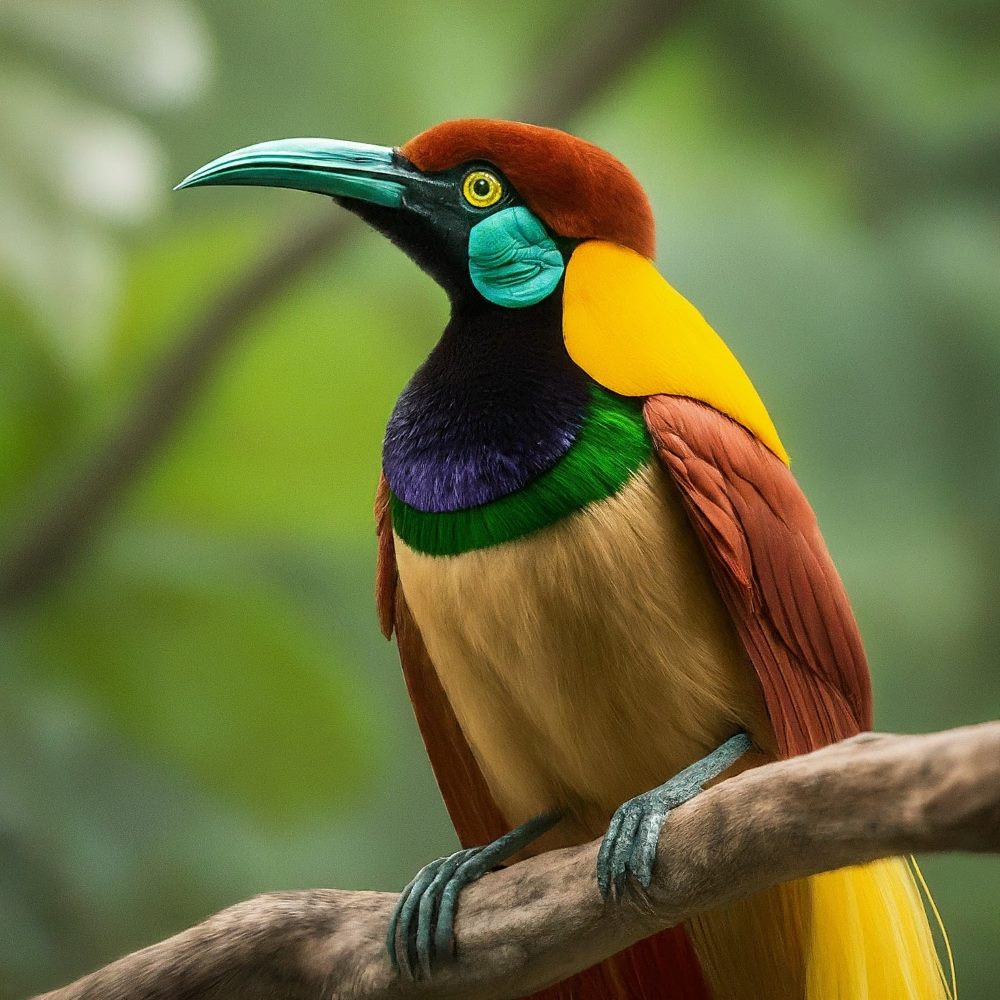
8. Twelve-Wired Bird-of-Paradise:
The Twelve-Wired Bird-of-Paradise (Seleucidis melanoleucus) is a captivating species endemic to the rainforests of New Guinea and nearby islands. Named after the twelve wire-like feathers that adorn its flanks, the Twelve-Wired Bird-of-Paradise is known for its intricate courtship displays and vibrant plumage.
The male Twelve-Wired Bird-of-Paradise displays a striking combination of black, white, and yellow feathers, with long, wire-like plumes extending from its flanks. During courtship rituals, males perform elaborate dance routines, spreading their wings and tail feathers to create a mesmerizing display of color and movement. The Twelve-Wired Bird-of-Paradise is a symbol of the rich biodiversity and cultural heritage of New Guinea, captivating birdwatchers with its beauty and grace.
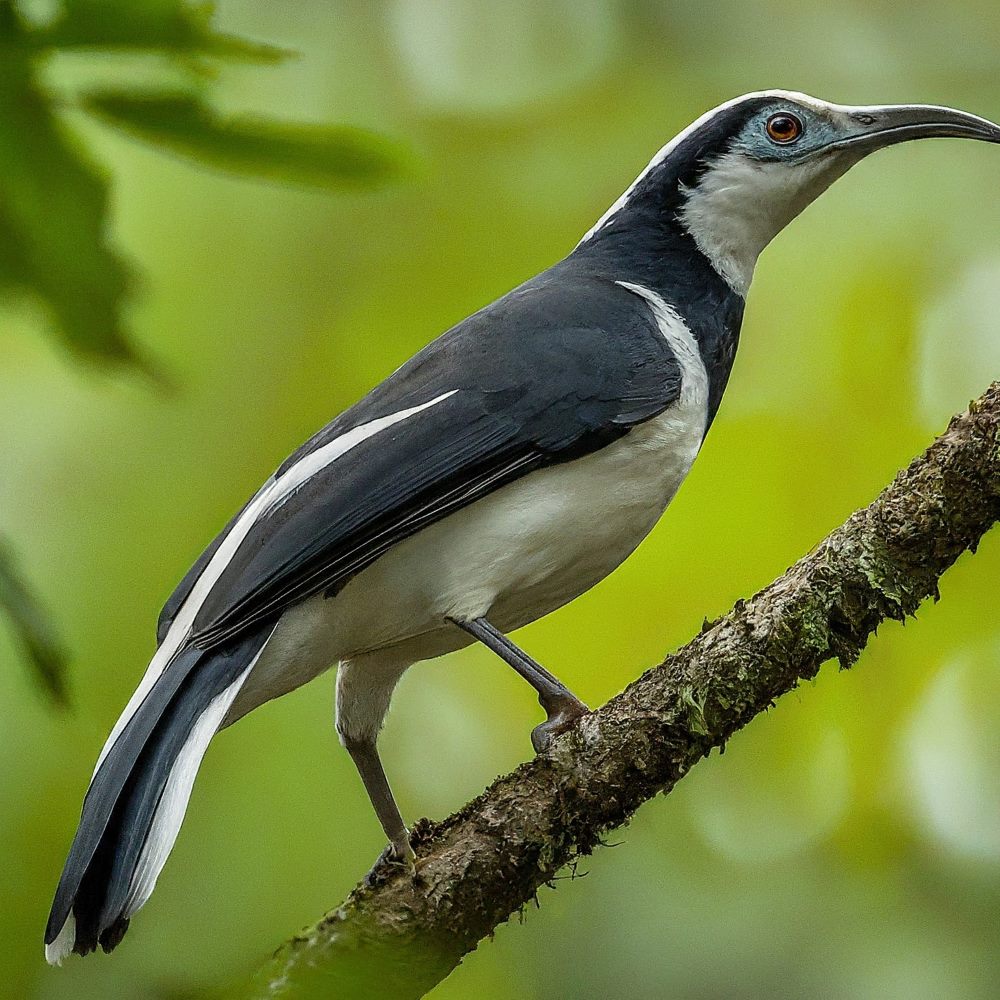
9. Pale-Billed Sicklebill:
The Pale-Billed Sicklebill (Drepanornis bruijnii) is a striking bird-of-paradise species endemic to the rainforests of New Guinea and nearby islands. Named after its distinctive sickle-shaped bill and pale-colored markings, the Pale-Billed Sicklebill is known for its unique vocalizations and elaborate courtship displays.
The male Pale-Billed Sicklebill displays a striking combination of black, green, and iridescent blue feathers, with a distinctive curved bill and elongated tail feathers. During courtship rituals, males perform intricate dance routines, puffing out their chest and tail feathers while emitting loud, melodious calls to attract mates. The Pale-Billed Sicklebill is a symbol of the rich biodiversity and cultural heritage of New Guinea, captivating birdwatchers with its beauty and charisma.
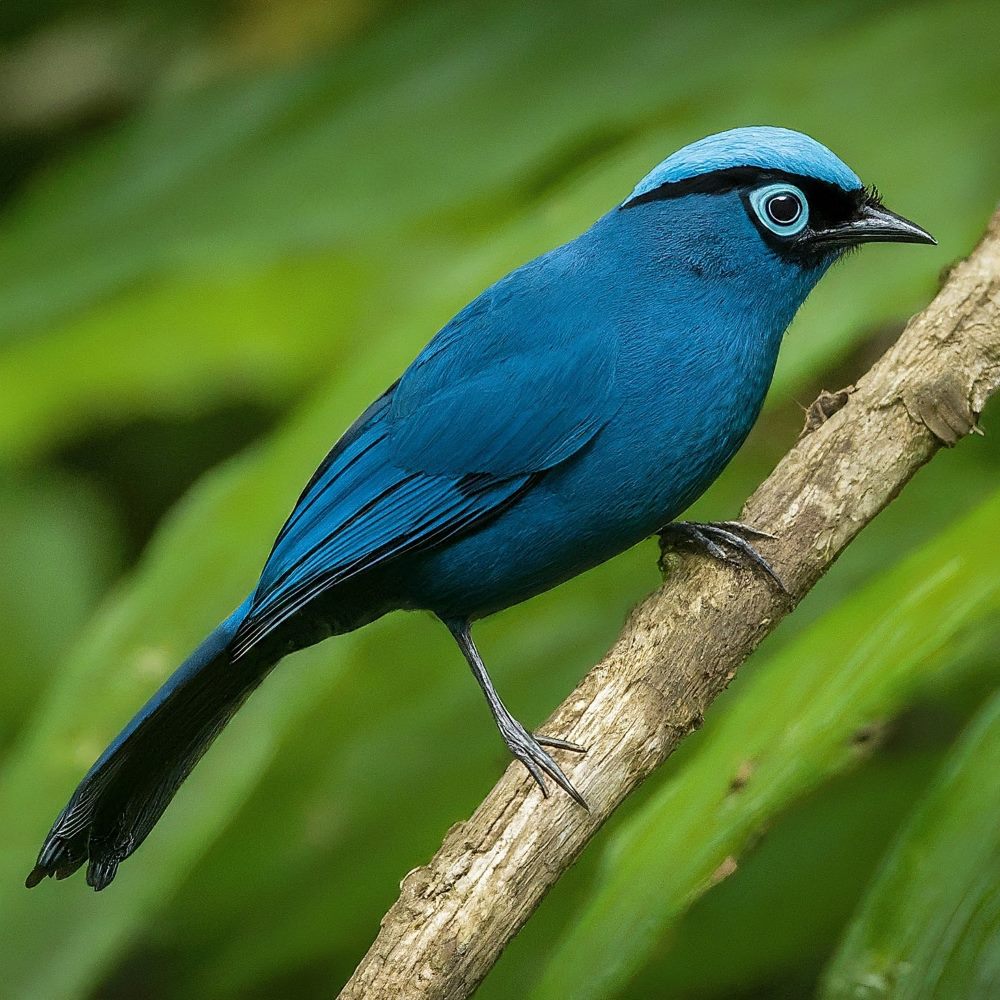
10. Wallace’s Standardwing:
Wallace’s Standardwing (Semioptera wallacii) is a captivating bird-of-paradise species endemic to the rainforests of New Guinea and nearby islands. Named after the renowned naturalist Alfred Russel Wallace, who first discovered the species in the 19th century, Wallace’s Standardwing is known for its elaborate courtship displays and unique plumage.
The male Wallace’s Standardwing displays a striking combination of black, white, and iridescent blue feathers, with elongated wing plumes and a distinctive crest. During courtship rituals, males gather in communal display areas called leks, where they perform synchronized dance routines and vocalizations to attract females. Wallace’s Standardwing is a symbol of the rich biodiversity and cultural heritage of New Guinea, captivating birdwatchers with its beauty and grace.
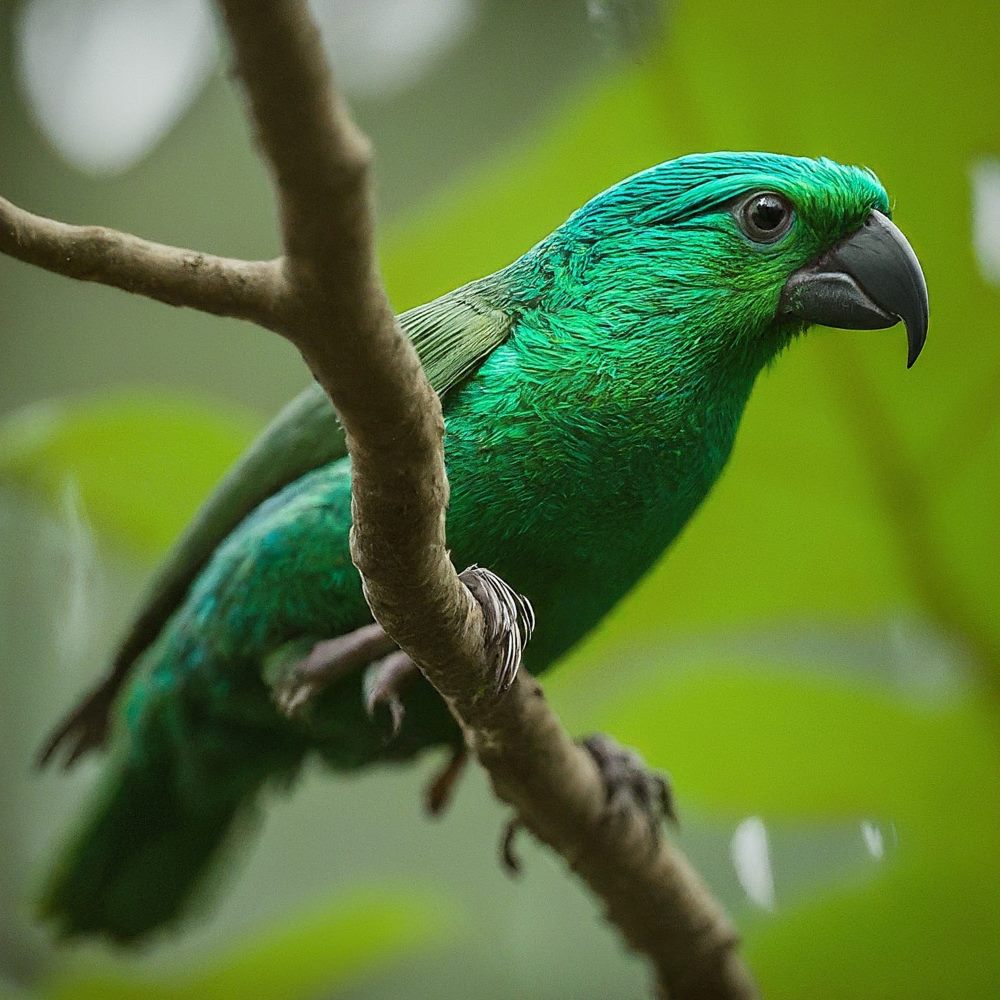
11. Greater Lophorina:
The Greater Lophorina (Lophorina superba), also known as the superb bird-of-paradise, is a mesmerizing species endemic to the rainforests of New Guinea and surrounding islands. Named for its exceptional beauty and elegance, the Greater Lophorina is renowned for its elaborate courtship displays and unique plumage.
The male Greater Lophorina displays a striking combination of iridescent black, blue, and green feathers, with elongated tail feathers and a distinctive fan-shaped crest. During courtship rituals, males perform intricate dance routines, puffing out their chest feathers and rotating their bodies to showcase their vibrant colors. The Greater Lophorina is a symbol of the rich biodiversity and cultural heritage of New Guinea, captivating birdwatchers with its beauty and charisma.
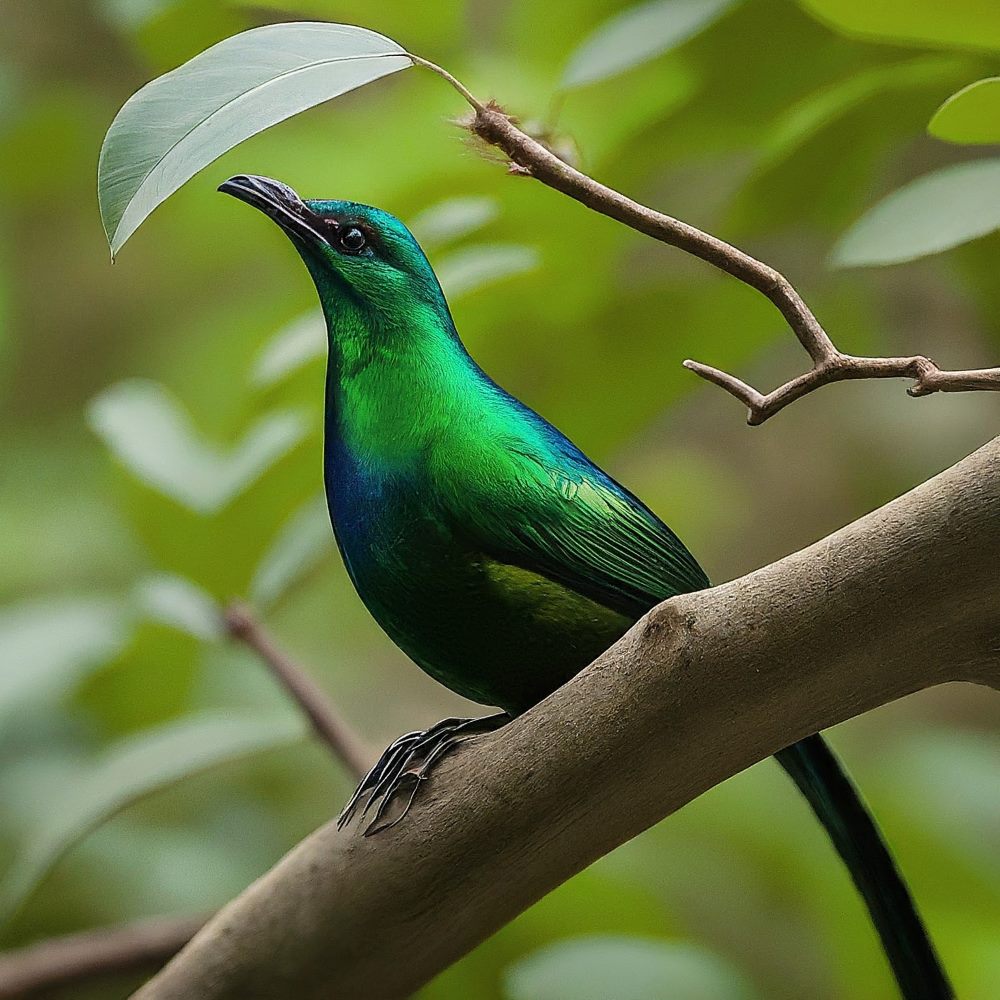
12. Victoria’s Riflebird:
Victoria’s Riflebird (Ptiloris victoriae) is a captivating bird-of-paradise species endemic to the rainforests of northeastern Queensland, Australia. Named in honor of Queen Victoria, who reigned during the 19th century, Victoria’s Riflebird is known for its elaborate courtship displays and striking plumage. The male Victoria’s Riflebird displays a glossy black plumage with iridescent blue and green highlights, along with elongated tail feathers and a distinctive shield-shaped crest. During courtship rituals, males perform intricate dance routines, spreading their wings and tail feathers to create a mesmerizing display of color and movement. Victoria’s Riflebird is a symbol of Australia’s unique wildlife and natural heritage, captivating birdwatchers with its beauty and grace.
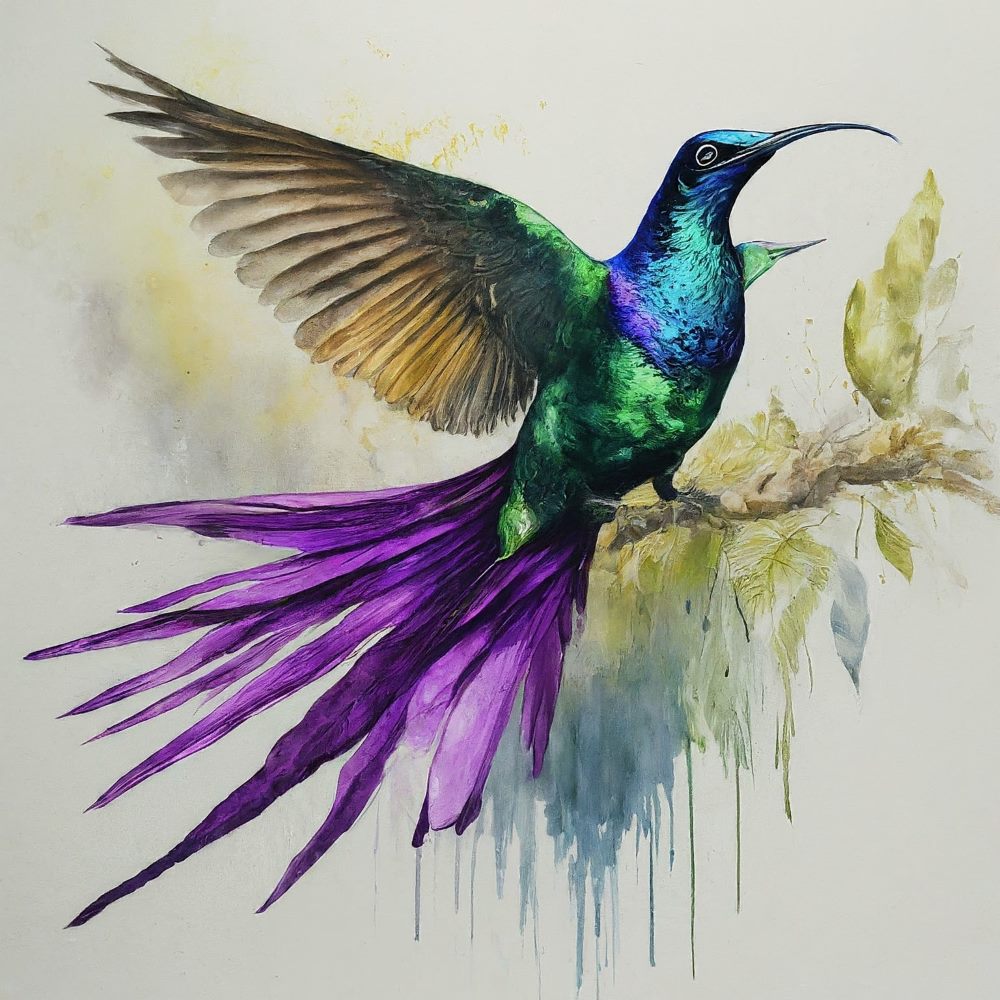
13. Magnificent Riflebird:
The Magnificent Riflebird (Ptiloris magnificus) is a stunning bird-of-paradise species endemic to the rainforests of New Guinea and nearby islands. Named for its exceptional beauty and elegance, the Magnificent Riflebird is renowned for its elaborate courtship displays and vibrant plumage.
The male Magnificent Riflebird displays a glossy black plumage with iridescent blue and green highlights, along with elongated tail feathers and a distinctive shield-shaped crest. During courtship rituals, males perform intricate dance routines, puffing out their chest feathers and rotating their bodies to showcase their vibrant colors. The Magnificent Riflebird is a symbol of the rich biodiversity and cultural heritage of New Guinea, captivating birdwatchers with its beauty and charisma.
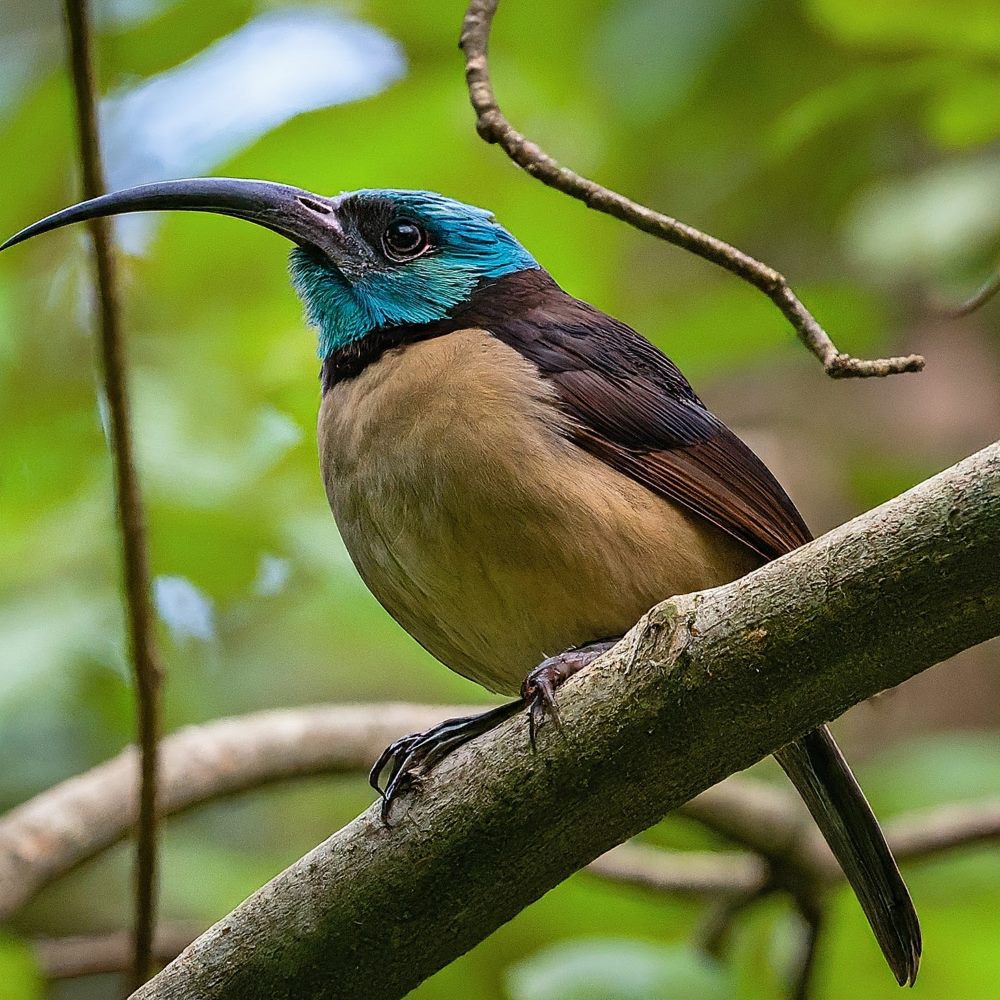
14. Brown Sicklebill:
The Brown Sicklebill (Drepanornis browni) is a fascinating bird-of-paradise species native to the rainforests of New Guinea. Named for its distinctive sickle-shaped bill and earthy brown plumage, the Brown Sicklebill is known for its elusive nature and unique courtship displays.
The male Brown Sicklebill boasts a rich brown coloration with subtle iridescent highlights, along with elongated tail feathers and a curved bill. During courtship rituals, males perform intricate dance routines, fluffing up their feathers and emitting low, rumbling calls to attract females. The Brown Sicklebill exemplifies the diversity and beauty of New Guinea’s avifauna, captivating birdwatchers with its understated elegance and cryptic behavior.
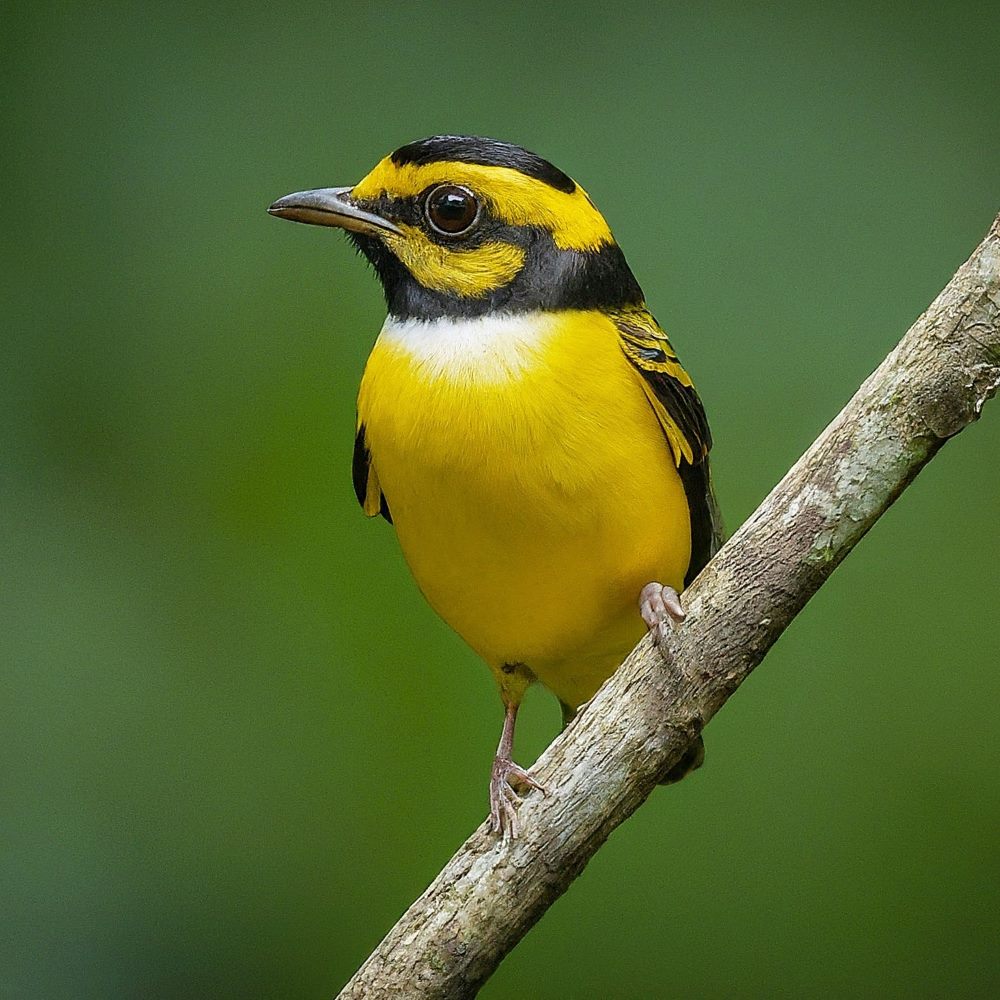
15. Short-Tailed Paradigalla:
The Short-Tailed Paradigalla (Paradigalla brevicauda) is a striking bird-of-paradise species endemic to the montane forests of New Guinea. Named for its short, rounded tail feathers and vibrant plumage, the Short-Tailed Paradigalla is known for its unique courtship displays and vocalizations.
The male Short-Tailed Paradigalla displays a combination of iridescent green, blue, and purple feathers, with distinctive scalloped patterns on its chest and belly. During courtship rituals, males perform acrobatic displays, hopping from branch to branch and emitting loud, melodious calls to attract mates. The Short-Tailed Paradigalla is a symbol of the rich biodiversity and cultural heritage of New Guinea, captivating birdwatchers with its beauty and grace.
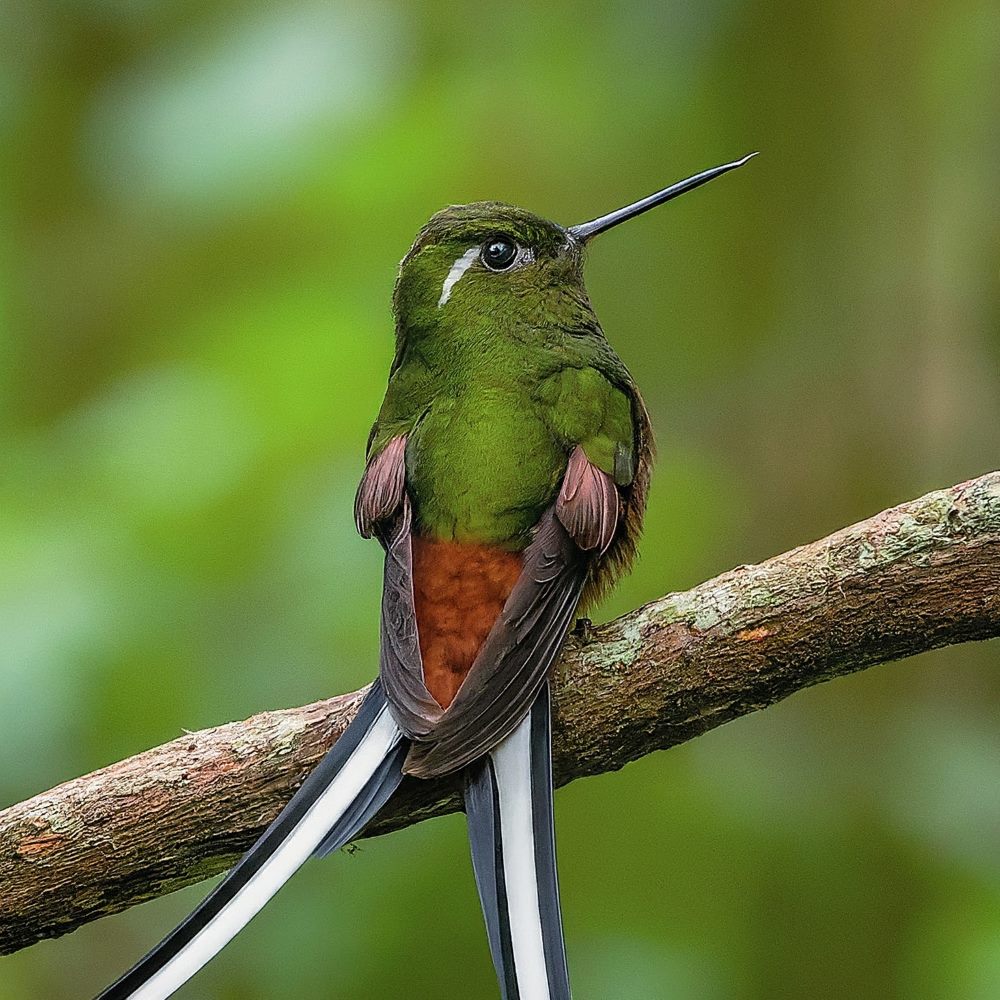
16. Ribbon-Tailed Astrapia:
The Ribbon-Tailed Astrapia (Astrapia mayeri) is an enchanting bird-of-paradise species native to the mountainous forests of New Guinea. Named for its long, ribbon-like tail feathers, the Ribbon-Tailed Astrapia is known for its elaborate courtship displays and vibrant plumage.
The male Ribbon-Tailed Astrapia boasts a striking combination of iridescent green, blue, and black feathers, with elongated tail feathers that can exceed two feet in length. During courtship rituals, males perform aerial displays, swooping and diving through the forest canopy while displaying their magnificent tail feathers. The Ribbon-Tailed Astrapia is a symbol of the beauty and diversity of New Guinea’s avifauna, captivating birdwatchers with its graceful flight and stunning appearance.
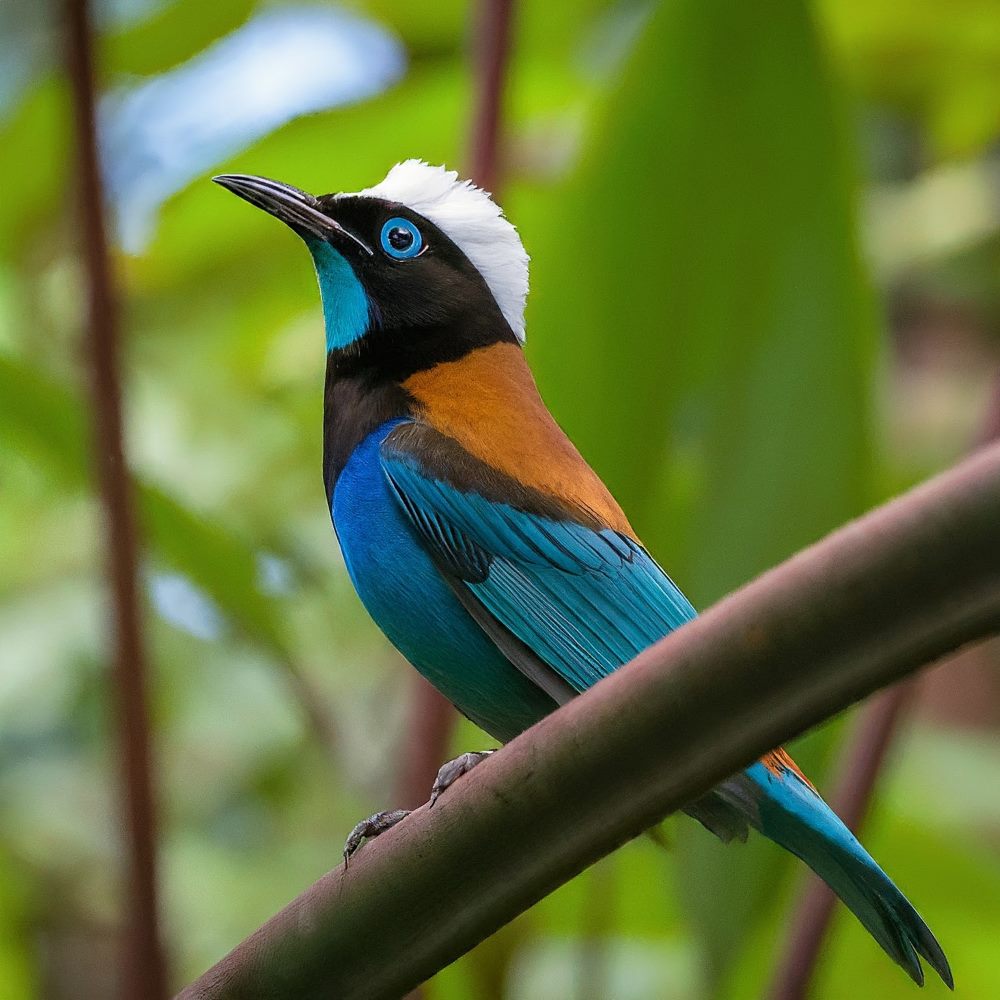
17. Blue Bird-of-Paradise:
The Blue Bird-of-Paradise (Paradisaea rudolphi) is a mesmerizing bird-of-paradise species endemic to the rainforests of New Guinea. Named for its vibrant blue plumage and striking coloration, the Blue Bird-of-Paradise is known for its elaborate courtship displays and unique vocalizations.
The male Blue Bird-of-Paradise displays a deep indigo-blue coloration with iridescent highlights, along with elongated tail feathers and a distinctive head crest. During courtship rituals, males perform intricate dance routines, puffing out their chest feathers and emitting loud, melodious calls to attract females. The Blue Bird-of-Paradise is a symbol of the rich biodiversity and cultural heritage of New Guinea, captivating birdwatchers with its beauty and charisma.
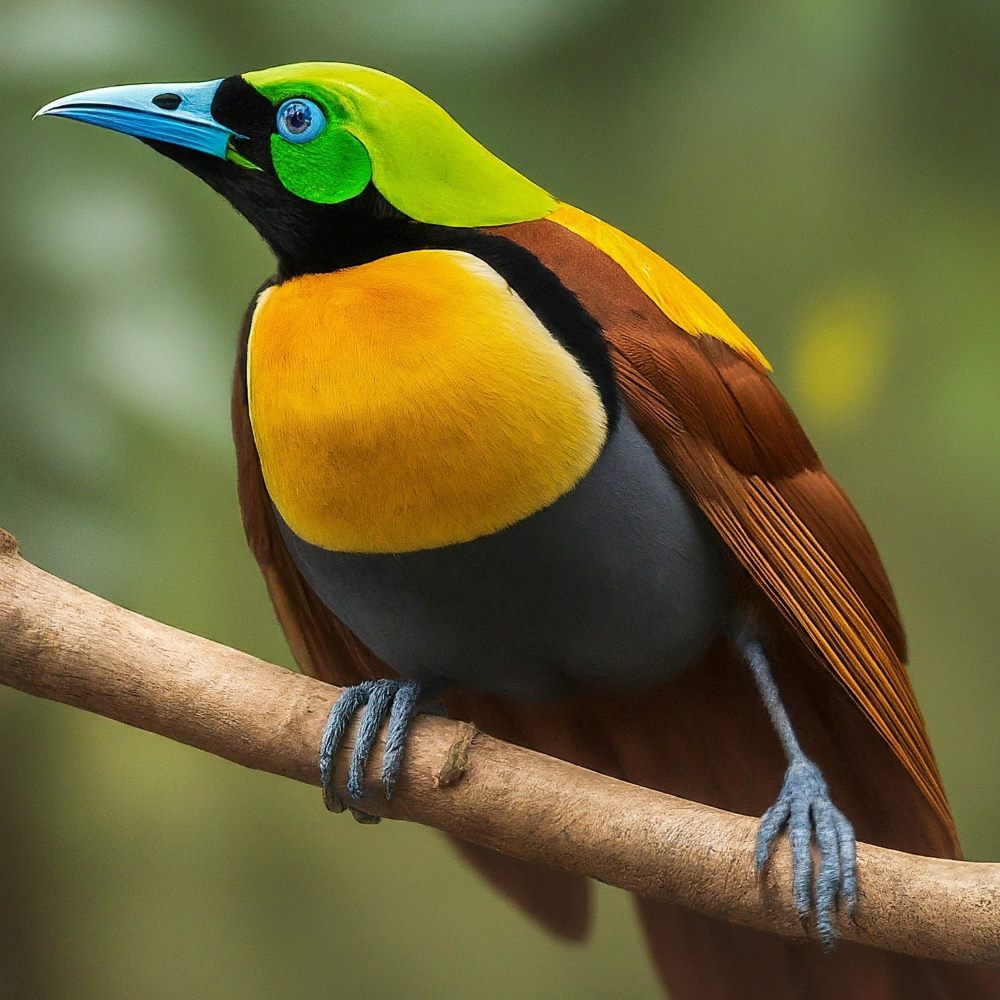
18. Wilson’s Bird-of-Paradise:
Wilson’s Bird-of-Paradise (Cicinnurus respublica) is a spectacular bird-of-paradise species native to the rainforests of Waigeo and Batanta islands in West Papua, Indonesia. Named after the American ornithologist and naturalist Alexander Wilson, who first described the species in the 18th century, Wilson’s Bird-of-Paradise is known for its vibrant plumage and elaborate courtship displays.
The male Wilson’s Bird-of-Paradise displays a brilliant combination of crimson, yellow, and blue feathers, with elongated tail feathers and a distinctive shield-shaped crest. During courtship rituals, males perform intricate dance routines, waving their head plumes and emitting loud, piercing calls to attract mates. Wilson’s Bird-of-Paradise is a symbol of Indonesia’s natural heritage and biodiversity, captivating birdwatchers with its beauty and grace.
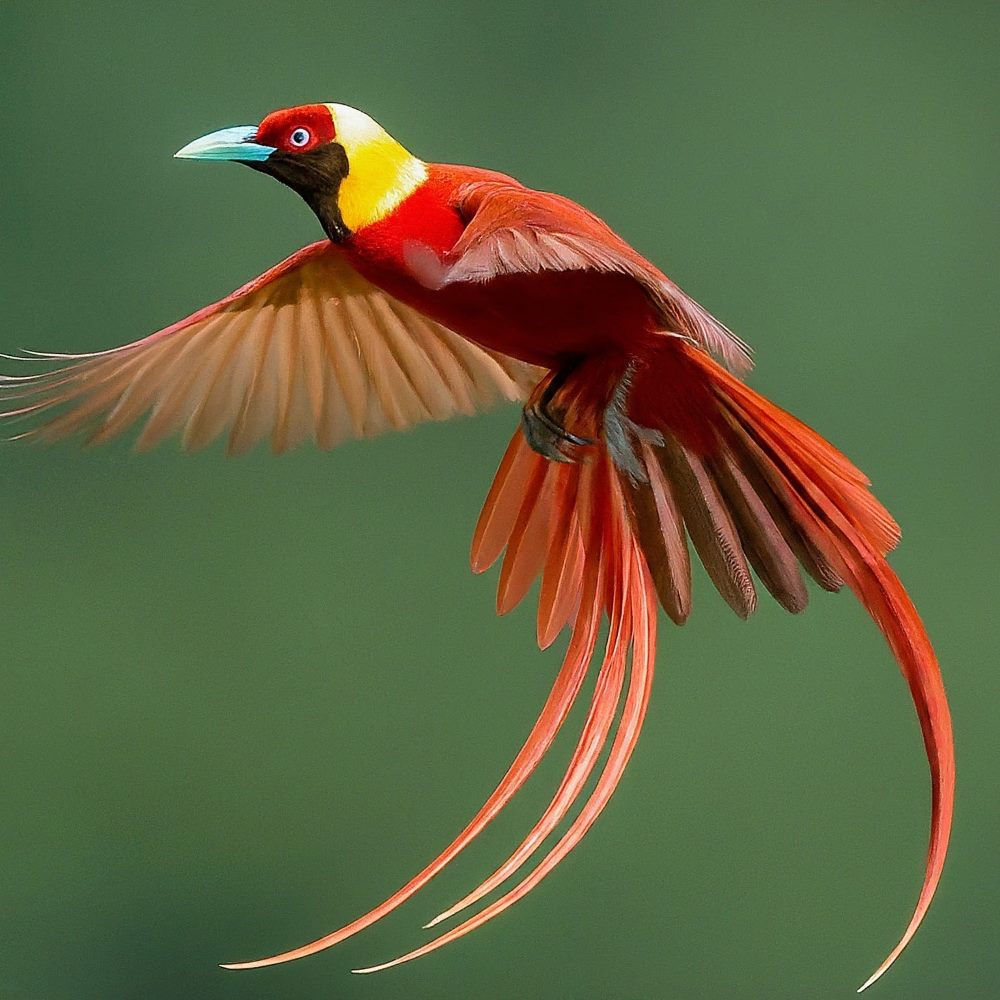
19. Red Bird-of-Paradise:
The Red Bird-of-Paradise (Paradisaea rubra) is a stunning bird-of-paradise species native to the rainforests of the islands of Waigeo and Batanta in West Papua, Indonesia. Renowned for its vibrant plumage and elaborate courtship displays, the Red Bird-of-Paradise is a symbol of Indonesia’s rich biodiversity and natural heritage.
The male Red Bird-of-Paradise displays a vibrant red and yellow coloration, with elongated tail feathers and a distinctive head crest. During courtship rituals, males perform intricate dance routines, spreading their wings and tail feathers to create a mesmerizing display of color and movement. The Red Bird-of-Paradise exemplifies the beauty and diversity of Indonesia’s avifauna, captivating birdwatchers with its stunning appearance and charismatic behavior.
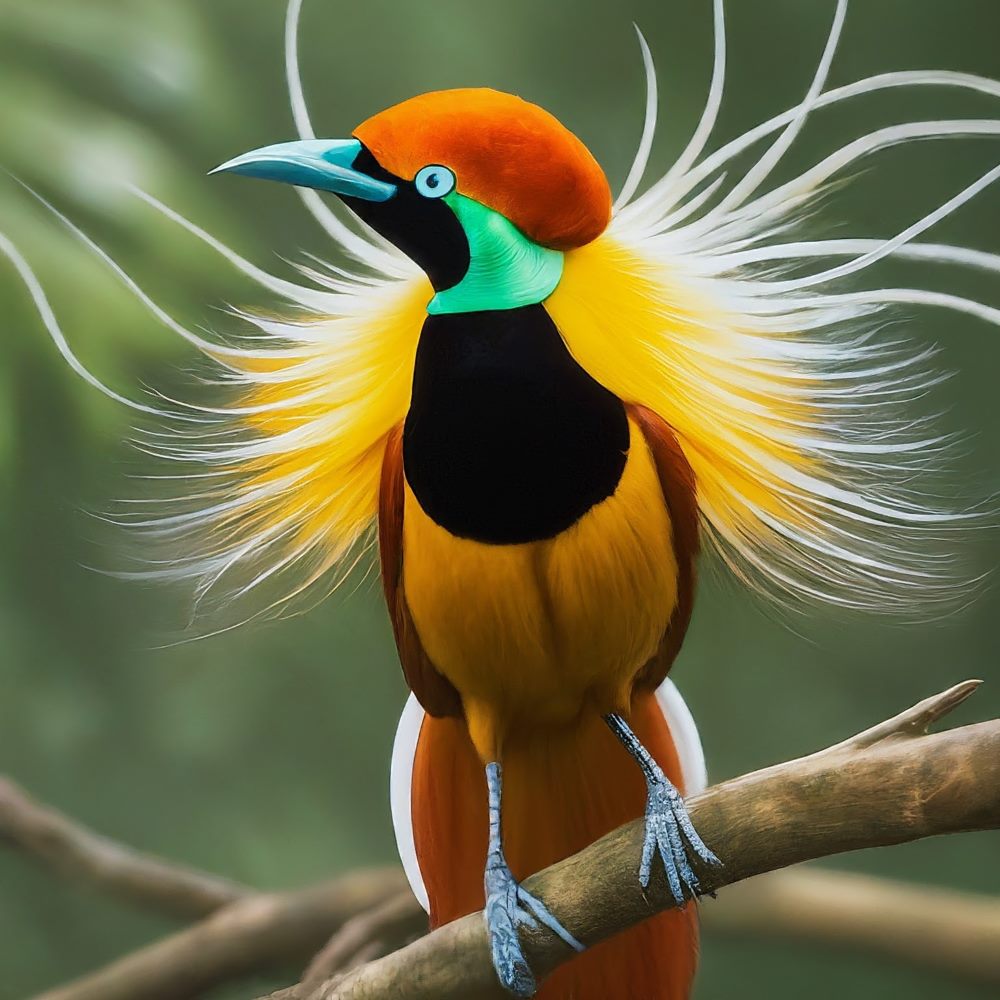
20. Greater Bird-of-Paradise:
The Greater Bird-of-Paradise (Paradisaea apoda) is an iconic bird-of-paradise species native to the rainforests of New Guinea and nearby islands. Named for its large size and elaborate plumage, the Greater Bird-of-Paradise is known for its intricate courtship displays and unique vocalizations.
The male Greater Bird-of-Paradise displays a combination of iridescent green, blue, and yellow feathers, with elongated tail feathers and a distinctive head crest. During courtship rituals, males perform elaborate dance routines, puffing out their chest feathers and emitting loud, melodious calls to attract females. The Greater Bird-of-Paradise is a symbol of the rich biodiversity and cultural heritage of New Guinea, captivating birdwatchers with its beauty and grace.
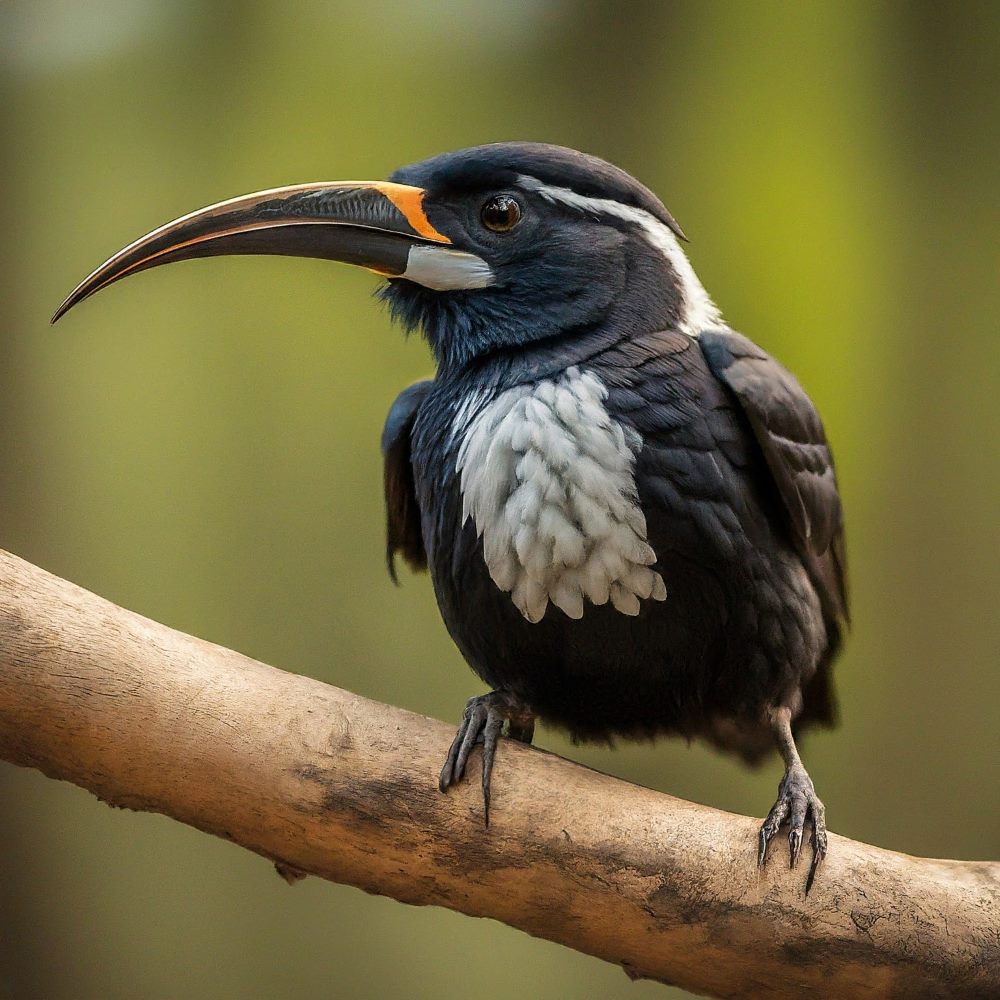
21. Black Sicklebill:
The Black Sicklebill (Epimachus fastuosus) is a captivating bird-of-paradise species native to the rainforests of New Guinea. Named for its distinctive sickle-shaped bill and glossy black plumage, the Black Sicklebill is known for its elaborate courtship displays and unique vocalizations.
The male Black Sicklebill displays a striking combination of black and iridescent green feathers, with elongated tail feathers and a curved bill. During courtship rituals, males perform intricate dance routines, hopping from branch to branch and emitting loud, melodious calls to attract mates. The Black Sicklebill is a symbol of the beauty and diversity of New Guinea’s avifauna, captivating birdwatchers with its elegance and charisma.
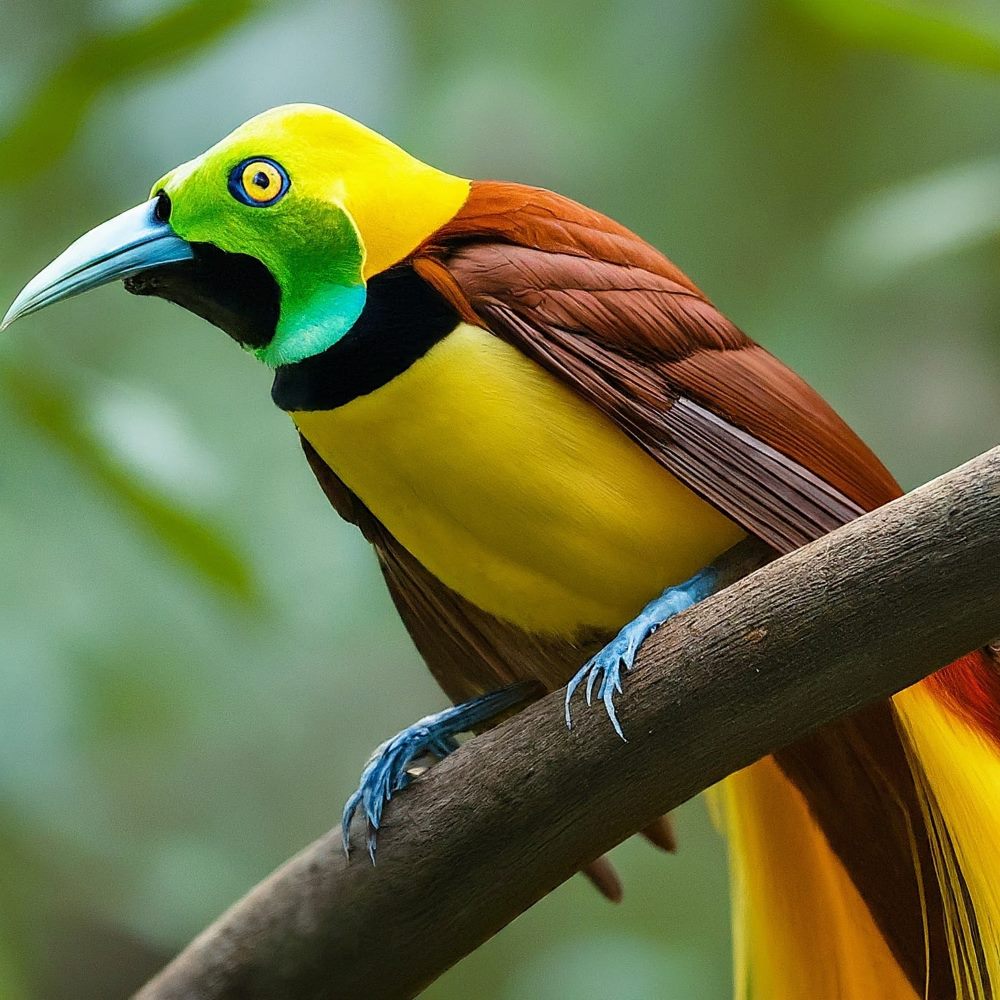
22. Lesser Bird-of-Paradise:
The Lesser Bird-of-Paradise (Paradisaea minor) is a mesmerizing bird-of-paradise species native to the rainforests of New Guinea and nearby islands. Named for its smaller size compared to other members of the genus Paradisaea, the Lesser Bird-of-Paradise is known for its vibrant plumage and elaborate courtship displays.
The male Lesser Bird-of-Paradise displays a combination of iridescent green, blue, and yellow feathers, with elongated tail feathers and a distinctive head crest. During courtship rituals, males perform intricate dance routines, spreading their wings and tail feathers to create a mesmerizing display of color and movement. The Lesser Bird-of-Paradise is a symbol of the rich biodiversity and cultural heritage of New Guinea, captivating birdwatchers with its beauty and grace.

23. Paradise Riflebird:
The Paradise Riflebird (Ptiloris paradiseus) is a captivating bird-of-paradise species native to the rainforests of northeastern Australia and New Guinea. Known for its iridescent plumage and elaborate courtship displays, the Paradise Riflebird is a symbol of the region’s rich biodiversity and natural heritage.
The male Paradise Riflebird displays a combination of glossy black and iridescent blue-green feathers, with elongated tail feathers and a distinctive shield-shaped crest. During courtship rituals, males perform intricate dance routines, spreading their wings and tail feathers while emitting loud, melodious calls to attract females. The Paradise Riflebird exemplifies the beauty and diversity of Australia’s avifauna, captivating birdwatchers with its stunning appearance and charismatic behavior.
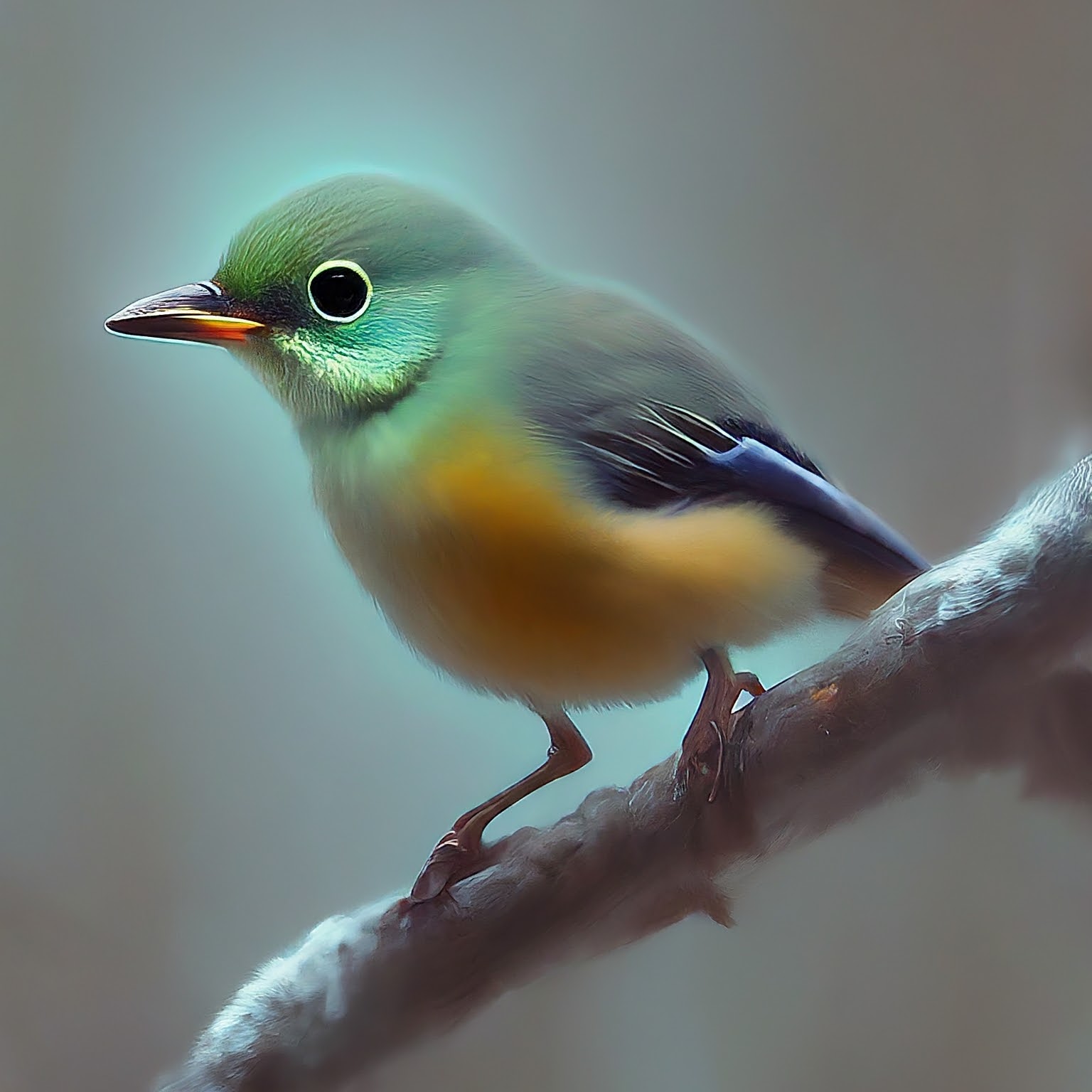
24. Lesser Melampitta:
The Lesser Melampitta (Melampitta lugubris) is a unique bird species endemic to the rainforests of New Guinea. Known for its cryptic appearance and elusive behavior, the Lesser Melampitta is a symbol of the region’s rich biodiversity and ecological importance.
The Lesser Melampitta displays a combination of earthy brown and olive-green plumage, with subtle markings and a rounded body shape. Despite its understated appearance, the Lesser Melampitta plays a vital role in the ecosystem as a seed disperser and insectivore, contributing to the health and diversity of tropical rainforests. The Lesser Melampitta serves as a reminder of the importance of conserving the natural habitats of New Guinea and protecting its unique wildlife.
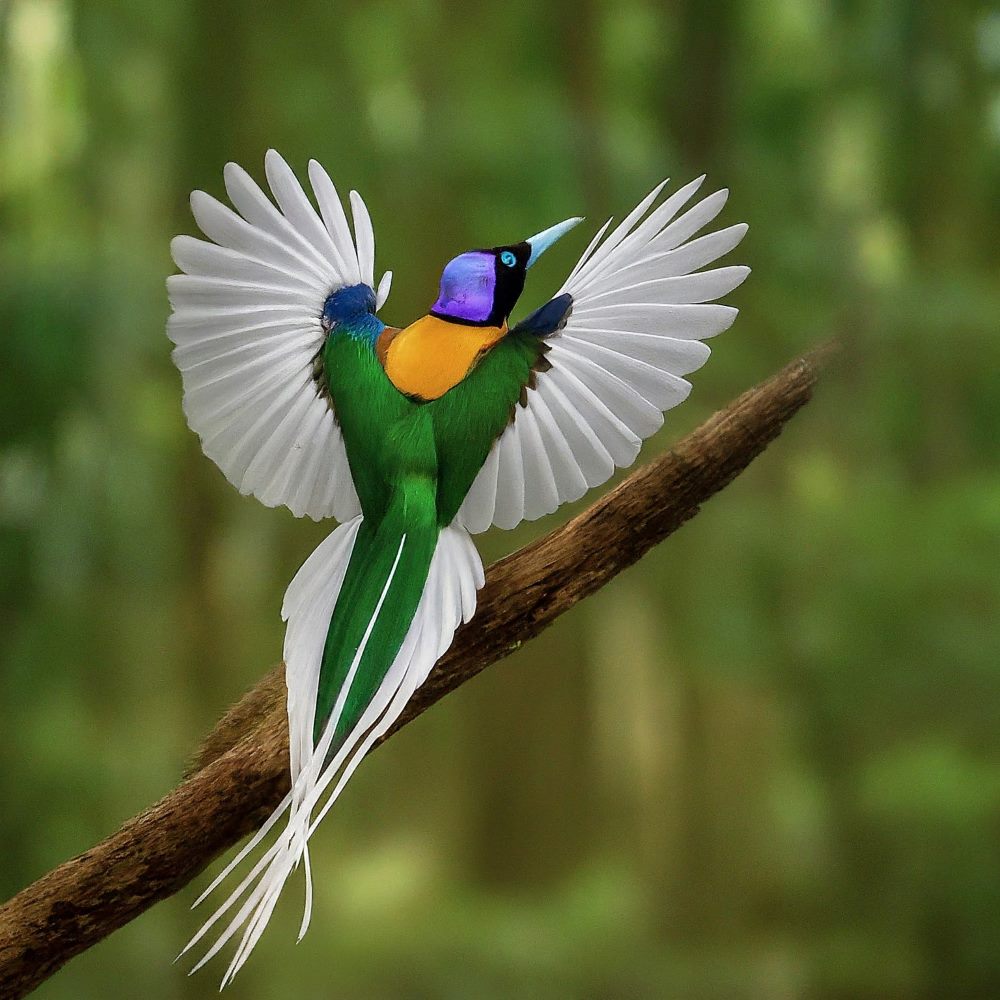
25. Standardwing Bird-of-Paradise:
The Standardwing Bird-of-Paradise (Semioptera wallacii) is a captivating bird species native to the rainforests of New Guinea and nearby islands. Named for its distinctive wing shape and elaborate courtship displays, the Standardwing Bird-of-Paradise is a symbol of the region’s rich biodiversity and cultural heritage.
The male Standardwing Bird-of-Paradise displays a combination of glossy black and iridescent blue feathers, with elongated wing plumes and a distinctive crest. During courtship rituals, males perform intricate dance routines, spreading their wings and tail feathers to create a mesmerizing display of color and movement. The Standardwing Bird-of-Paradise exemplifies the beauty and diversity of New Guinea’s avifauna, captivating birdwatchers with its stunning appearance and charismatic behavior.
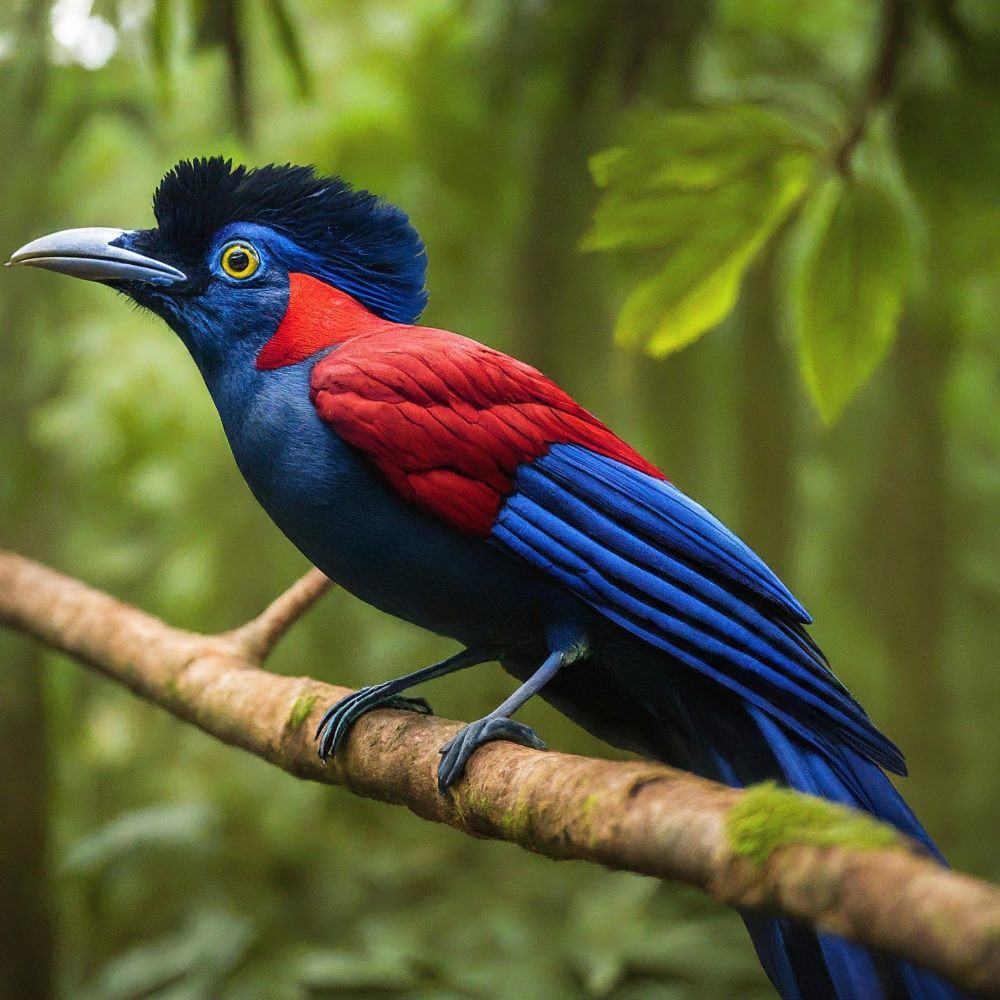
26. Halmahera Paradise-Crow:
The Halmahera Paradise-Crow (Lycocorax pyrrhopterus) is a fascinating bird species endemic to the rainforests of Halmahera Island in Indonesia. Known for its glossy black plumage and unique vocalizations, the Halmahera Paradise-Crow is a symbol of the region’s rich biodiversity and cultural heritage.
The Halmahera Paradise-Crow displays a combination of glossy black feathers and a distinctive red eye-ring, with a rounded body shape and long tail feathers. During courtship rituals, males perform intricate vocalizations and aerial displays to attract mates and establish territory. The Halmahera Paradise-Crow serves as a reminder of the importance of conserving Indonesia’s unique wildlife and protecting its natural habitats.
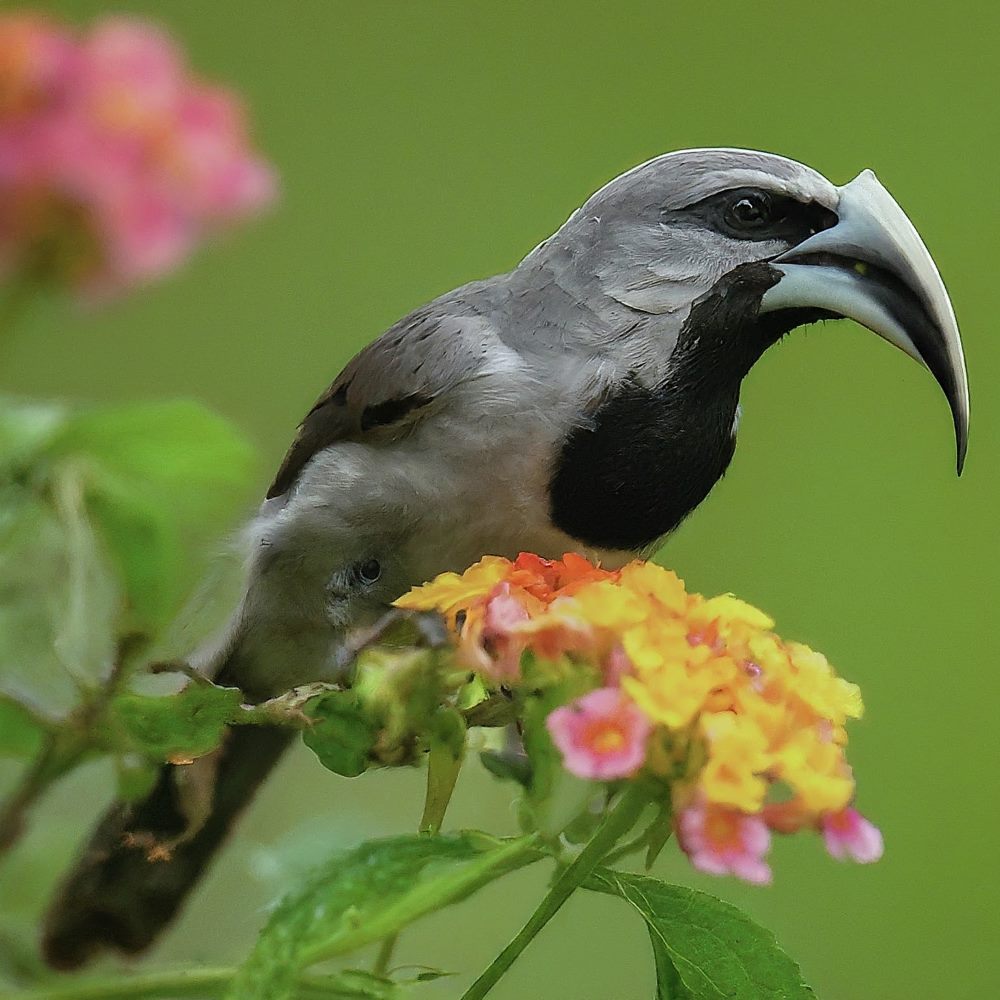
27. Black-Billed Sicklebill:
The Black-Billed Sicklebill (Epimachus albertisi) is an impressive bird-of-paradise species native to the montane forests of New Guinea. Named for its distinctive sickle-shaped bill and glossy black plumage, the Black-Billed Sicklebill is known for its elaborate courtship displays and unique vocalizations.
The male Black-Billed Sicklebill displays a striking combination of black and iridescent green feathers, with elongated tail feathers and a curved bill. During courtship rituals, males perform intricate dance routines, hopping from branch to branch and emitting loud, melodious calls to attract mates. The Black-Billed Sicklebill exemplifies the beauty and diversity of New Guinea’s avifauna, captivating birdwatchers with its elegance and charisma.
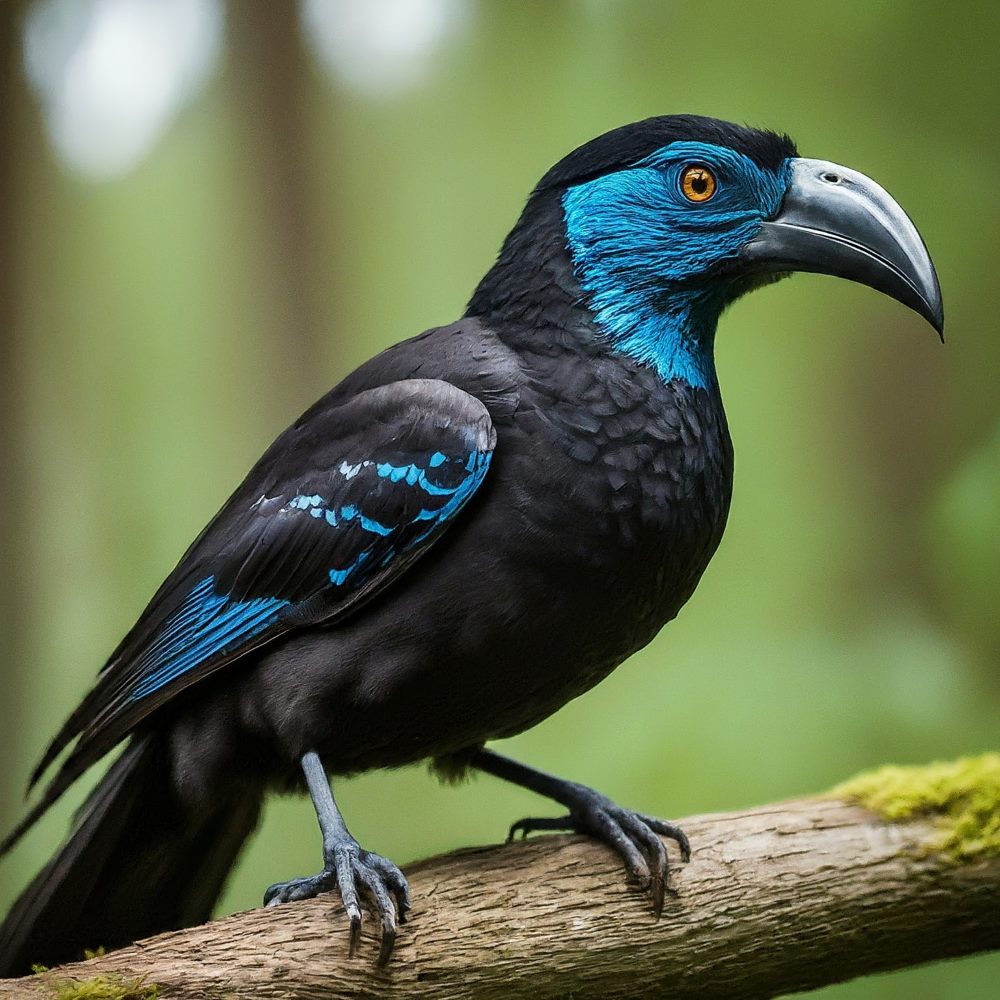
28. Growling Riflebird:
The Growling Riflebird (Ptiloris intercedens) is a captivating bird species native to the rainforests of northeastern Australia and New Guinea. Named for its distinctive vocalizations resembling a growling sound, the Growling Riflebird is known for its iridescent plumage and elaborate courtship displays.
The male Growling Riflebird displays a combination of glossy black and iridescent blue-green feathers, with elongated tail feathers and a distinctive shield-shaped crest. During courtship rituals, males perform intricate dance routines, spreading their wings and tail feathers while emitting deep, resonant calls to attract females. The Growling Riflebird serves as a symbol of Australia’s unique wildlife and natural heritage, captivating birdwatchers with its beauty and grace.
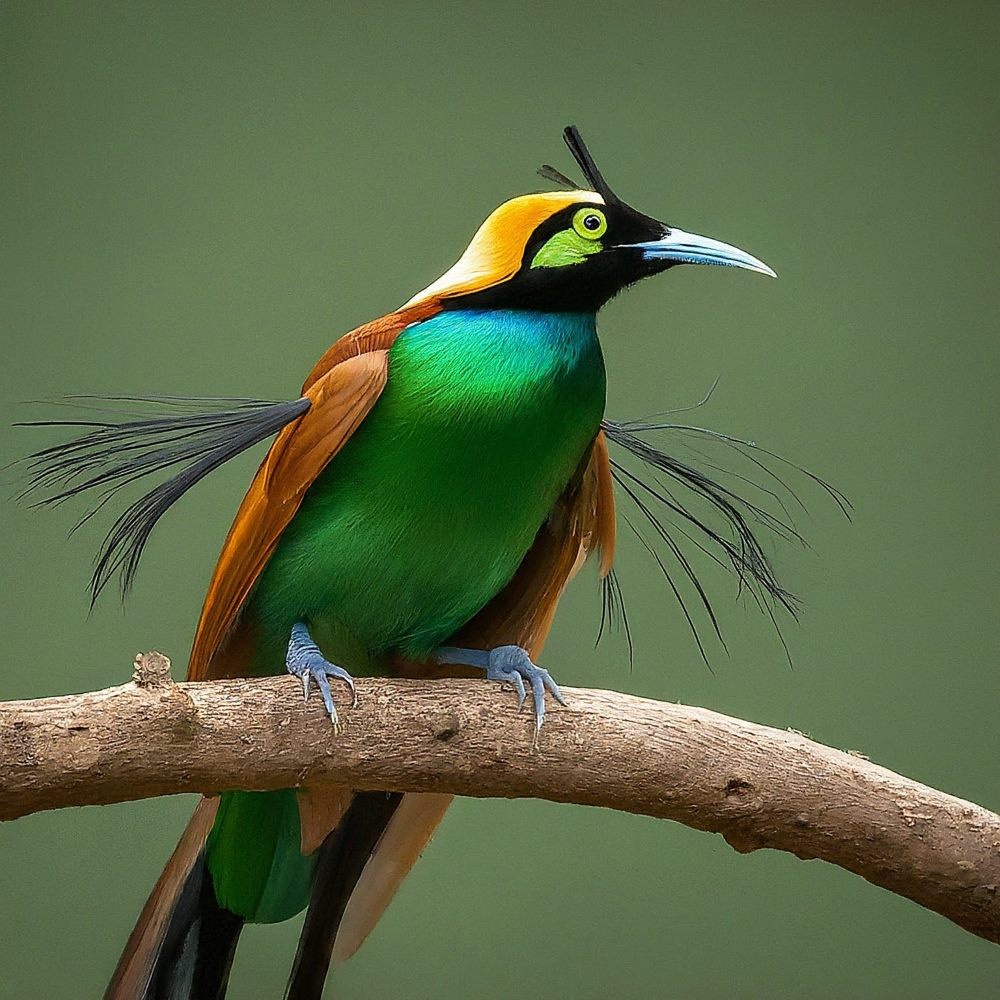
29. Duivenbode’s Six-Wired Bird-of-Paradise:
Duivenbode’s Six-Wired Bird-of-Paradise (Parotia sefilata) is a remarkable bird species native to the montane forests of New Guinea. Named after the Dutch naturalist and explorer Maarten Gerritszoon de Vries van Duivenbode, who first described the species in the 19th century, Duivenbode’s Six-Wired Bird-of-Paradise is known for its elaborate courtship displays and intricate plumage. The male Duivenbode’s Six-Wired Bird-of-Paradise displays a combination of black, white, and iridescent blue feathers, with six distinctive wire-like plumes extending from its head. During courtship rituals, males perform intricate dance routines, waving their head plumes and emitting loud, melodious calls to attract mates. Duivenbode’s Six-Wired Bird-of-Paradise is a symbol of the rich biodiversity and cultural heritage of New Guinea, captivating birdwatchers with its beauty and charisma.
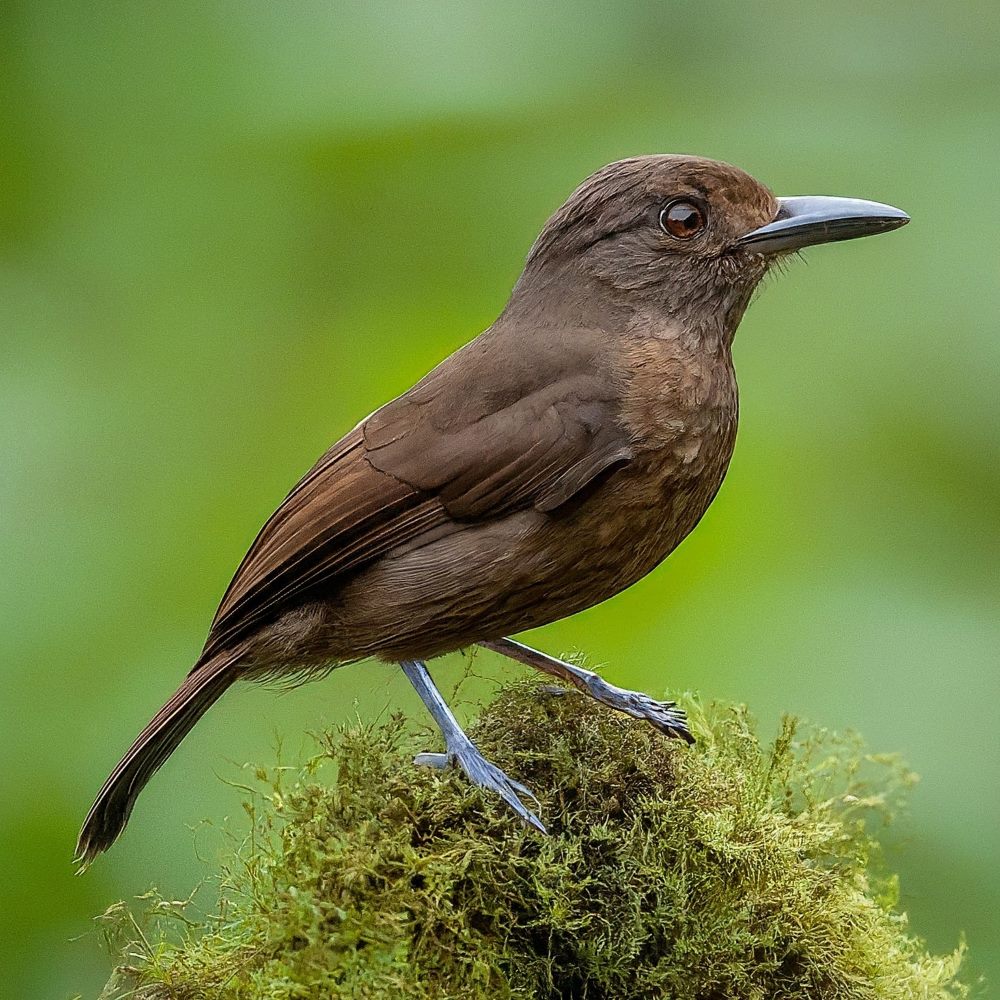
30. Greater Melampitta:
The Greater Melampitta (Melampitta gigantea) is a unique bird species native to the rainforests of New Guinea. Known for its cryptic appearance and elusive behavior, the Greater Melampitta is a symbol of the region’s rich biodiversity and ecological importance. The Greater Melampitta displays a combination of earthy brown and olive-green plumage, with subtle markings and a rounded body shape.
Despite its understated appearance, the Greater Melampitta plays a vital role in the ecosystem as a seed disperser and insectivore, contributing to the health and diversity of tropical rainforests. The Greater Melampitta serves as a reminder of the importance of conserving the natural habitats of New Guinea and protecting its unique wildlife.
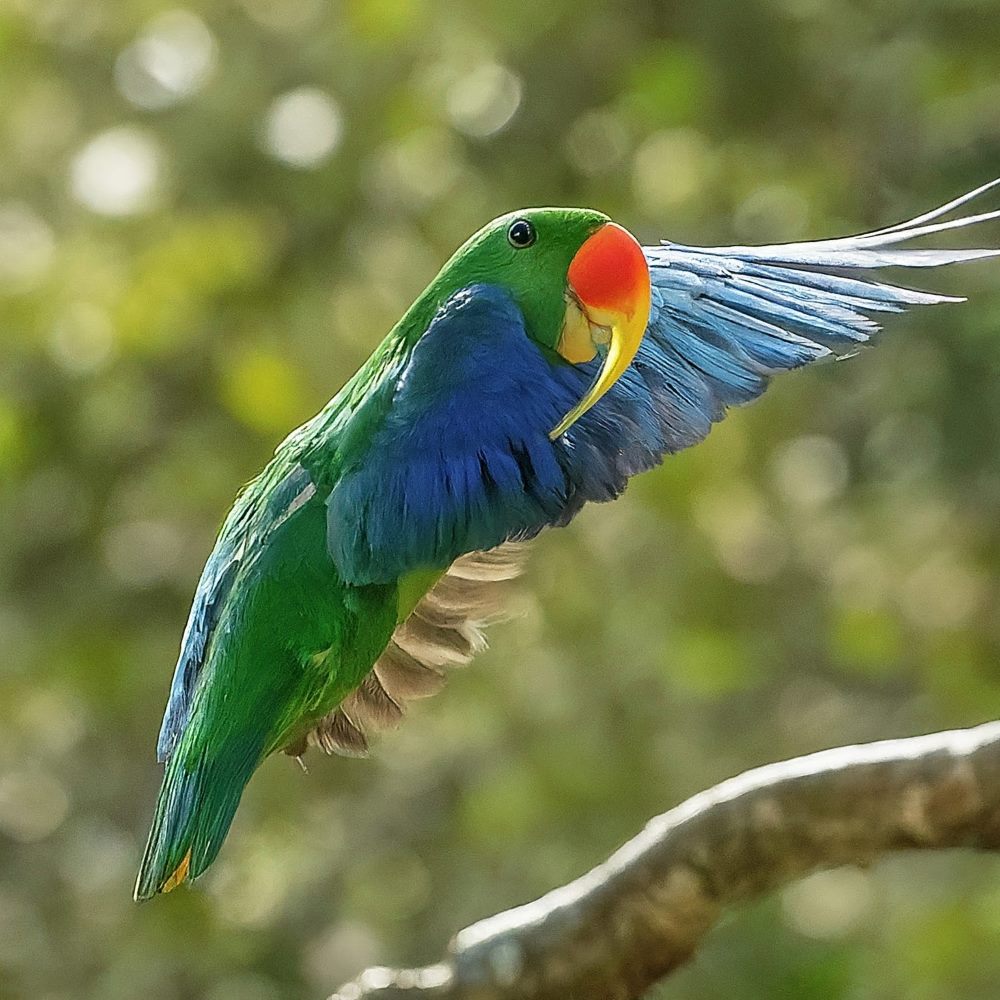
31. Sharpe’s Lobe-Billed Parotia:
Sharpe’s Lobe-Billed Parotia (Parotia sefilata) is a captivating bird species native to the montane forests of New Guinea. Named after the British zoologist Richard Bowdler Sharpe, who first described the species in the 19th century, Sharpe’s Lobe-Billed Parotia is known for its elaborate courtship displays and intricate plumage.
The male Sharpe’s Lobe-Billed Parotia displays a combination of black, white, and iridescent blue feathers, with a distinctive lobe-shaped bill and elongated tail feathers. During courtship rituals, males perform intricate dance routines, spreading their wings and tail feathers while emitting loud, melodious calls to attract mates. Sharpe’s Lobe-Billed Parotia is a symbol of the rich biodiversity and cultural heritage of New Guinea, captivating birdwatchers with its beauty and charisma.
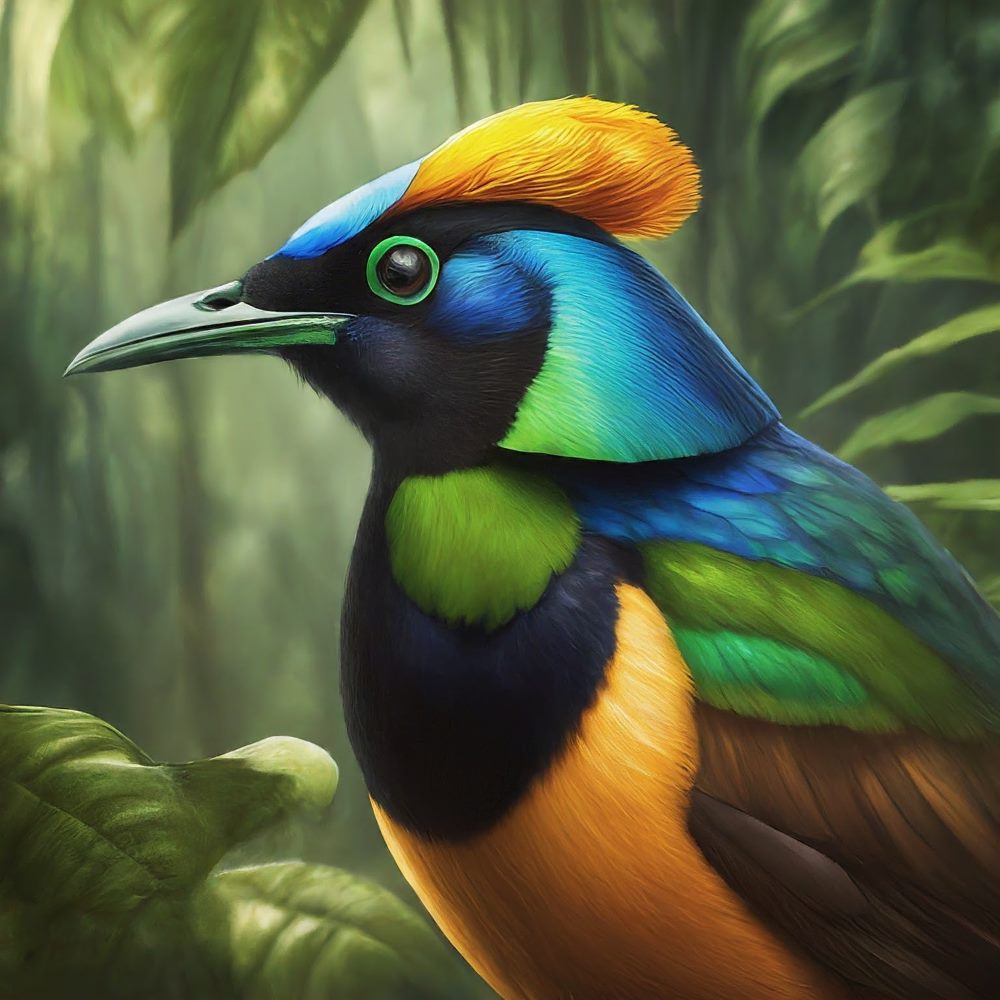
32. Wilhelmina’s Bird-of-Paradise:
Wilhelmina’s Bird-of-Paradise (Parotia wilhelminae) is an enchanting bird species native to the montane forests of New Guinea. Named after Queen Wilhelmina of the Netherlands, who reigned during the early 20th century, Wilhelmina’s Bird-of-Paradise is known for its intricate courtship displays and vibrant plumage.
The male Wilhelmina’s Bird-of-Paradise displays a combination of black, white, and iridescent blue feathers, with elongated tail feathers and a distinctive head crest. During courtship rituals, males perform elaborate dance routines, waving their head plumes and emitting loud, melodious calls to attract mates. Wilhelmina’s Bird-of-Paradise is a symbol of the rich biodiversity and cultural heritage of New Guinea, captivating birdwatchers with its beauty and grace.
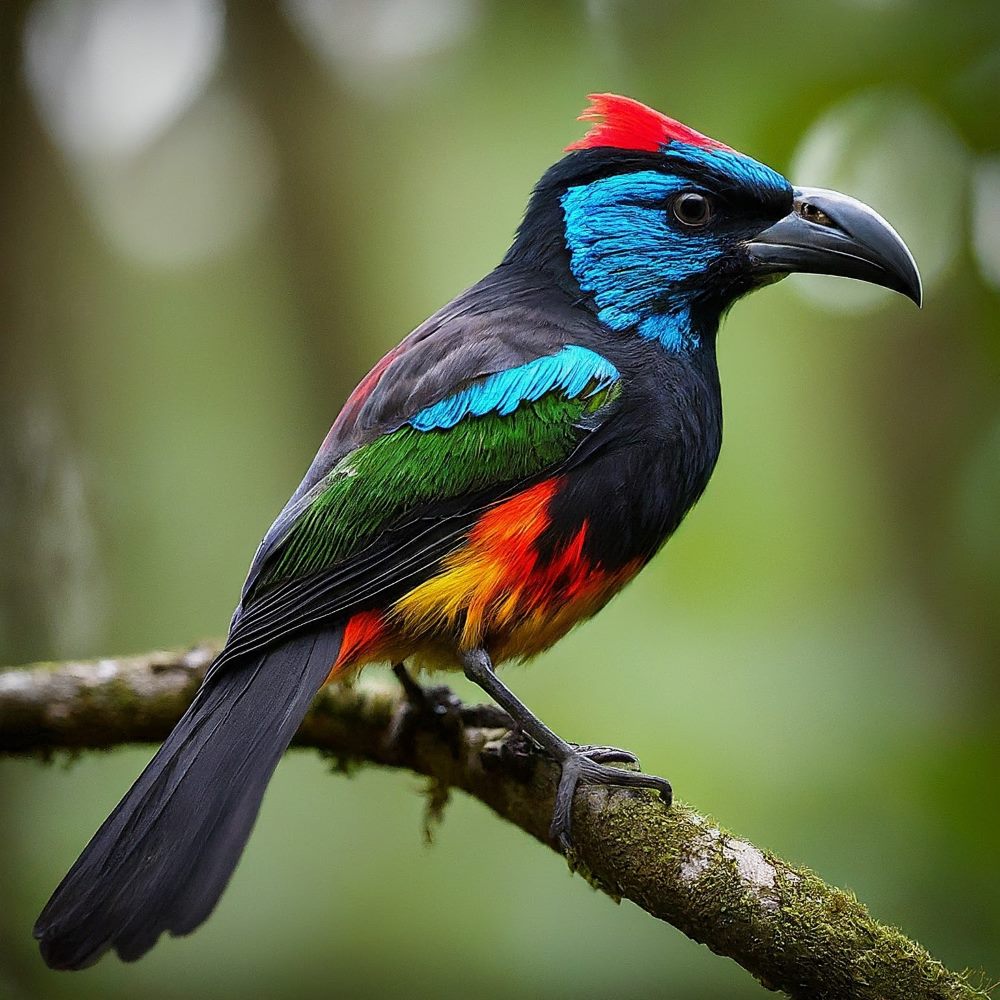
33. False-Lobed Astrapia:
The False-Lobed Astrapia (Astrapia rothschildi) is a stunning bird species native to the montane forests of New Guinea. Named after the British banker and naturalist Walter Rothschild, who first described the species in the late 19th century, the False-Lobed Astrapia is known for its elaborate courtship displays and vibrant plumage.
The male False-Lobed Astrapia displays a combination of glossy black and iridescent green feathers, with elongated tail feathers and a distinctive head crest. During courtship rituals, males perform intricate dance routines, spreading their wings and tail feathers to create a mesmerizing display of color and movement. False-Lobed Astrapia serves as a symbol of the beauty and diversity of New Guinea’s avifauna, captivating birdwatchers with its stunning appearance and charismatic behavior.
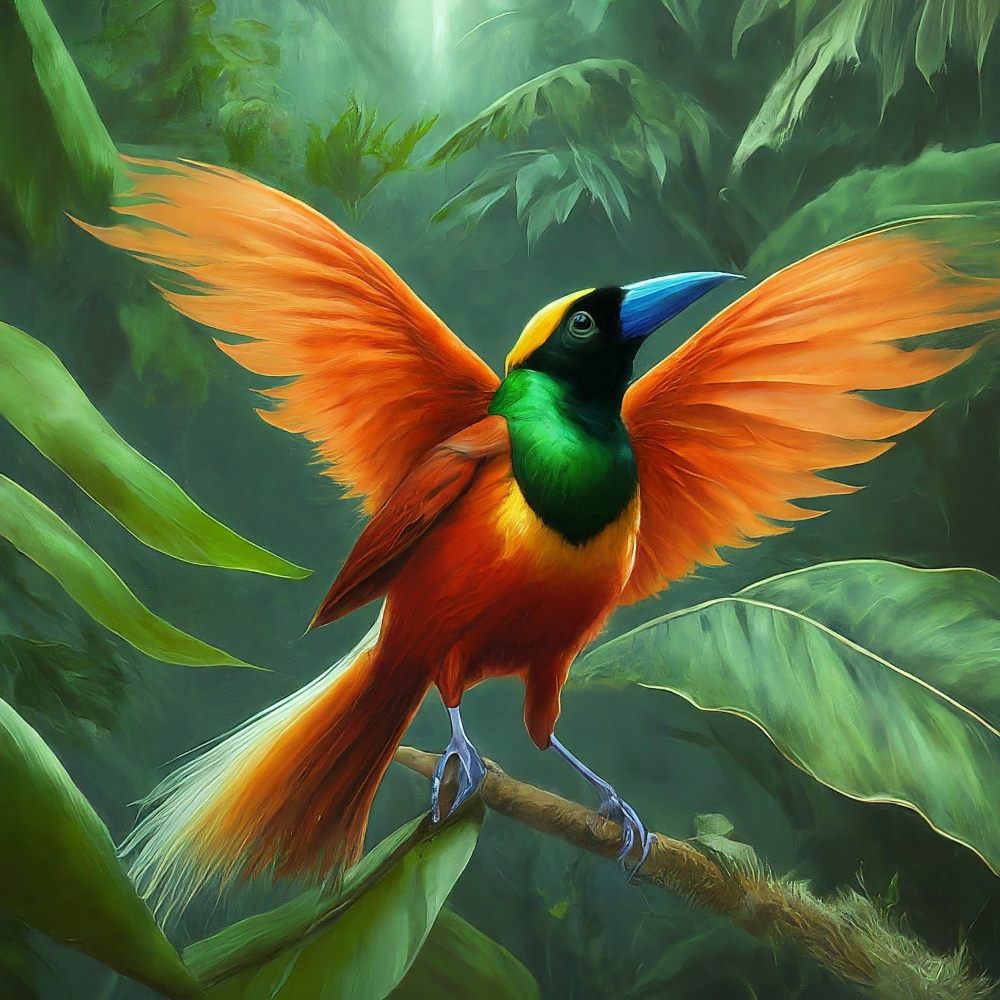
34. Stresemann’s Bird-of-Paradise:
Stresemann’s Bird-of-Paradise (Parotia stresemanni) is a captivating bird species native to the montane forests of New Guinea. Named after the German ornithologist and explorer Erwin Stresemann, who first described the species in the early 20th century, Stresemann’s Bird-of-Paradise is known for its intricate courtship displays and elaborate plumage.
The male Stresemann’s Bird-of-Paradise displays a combination of black, white, and iridescent blue feathers, with elongated tail feathers and a distinctive head crest. During courtship rituals, males perform elaborate dance routines, spreading their wings and tail feathers while emitting loud, melodious calls to attract mates. Stresemann’s Bird-of-Paradise exemplifies the beauty and diversity of New Guinea’s avifauna, captivating birdwatchers with its stunning appearance and charismatic behavior.
Conclusion:
Birds-of-paradise are undoubtedly among the most enchanting and captivating creatures in the avian world. From their stunning plumage to their intricate courtship displays, each species possesses its own unique charm and allure. These remarkable birds serve as symbols of the rich biodiversity and cultural heritage of their native habitats, captivating birdwatchers and enthusiasts around the globe. As we continue to explore and appreciate the wonders of nature, let us also strive to protect and preserve the habitats of these magnificent birds, ensuring that future generations can continue to marvel at their beauty and grace.
Related FAQ’s: Beautiful Birds-of-Paradise
- Where can Birds-of-Paradise be found? Birds-of-Paradise are predominantly found in the rainforests of New Guinea and surrounding islands, as well as parts of northeastern Australia and Indonesia. These lush, tropical habitats provide the ideal environment for these stunning birds to thrive.
- What makes Birds-of-Paradise so beautiful? Birds-of-Paradise are renowned for their vibrant plumage, intricate courtship displays, and unique physical characteristics. With their striking colors, elaborate feather patterns, and charismatic behavior, Birds-of-Paradise captivate birdwatchers and enthusiasts alike, earning them a reputation as some of the most beautiful birds in the world.
- How do Birds-of-Paradise attract mates? Male Birds-of-Paradise use elaborate courtship displays to attract females. These displays often involve intricate dance routines, vocalizations, and impressive feather displays. Each species has its own unique courtship rituals, with males competing to impress females with their beauty and prowess.
- Are Birds-of-Paradise endangered? While Birds-of-Paradise face threats from habitat loss, deforestation, and illegal hunting, not all species are considered endangered. However, several species are listed as vulnerable or threatened due to ongoing habitat destruction and other human activities. Conservation efforts are crucial to ensuring the long-term survival of these magnificent birds.
- What role do Birds-of-Paradise play in their ecosystems? Birds-of-Paradise play important roles in their ecosystems as seed dispersers and pollinators. By feeding on fruits and nectar, these birds help to maintain the health and diversity of tropical rainforests. Additionally, their presence contributes to the ecological balance of their native habitats.
- Can Birds-of-Paradise be kept as pets? Due to their protected status and specialized dietary and habitat requirements, Birds-of-Paradise are not suitable as pets. Additionally, capturing and keeping these birds in captivity is illegal in many countries, as they are considered endangered or threatened species.
- How can I see Birds-of-Paradise in the wild? Seeing Birds-of-Paradise in the wild requires visiting their native habitats in regions such as New Guinea, Australia, and Indonesia. Guided birdwatching tours and expeditions offer opportunities to observe these stunning birds in their natural environment, providing unforgettable experiences for bird enthusiasts.
- What can I do to help protect Birds-of-Paradise? Supporting conservation organizations, advocating for habitat protection, and raising awareness about the importance of preserving biodiversity are crucial steps in protecting Birds-of-Paradise and their habitats. Additionally, practicing sustainable tourism and responsible birdwatching can help minimize negative impacts on these vulnerable species.

94% of pet owners say their animal pal makes them smile more than once a day. In 2007, I realized that I was made for saving Animals. My father is a Vet, and I think every pet deserves one. I started this blog, “InPetCare”, in 2019 with my father to enlighten a wider audience.
